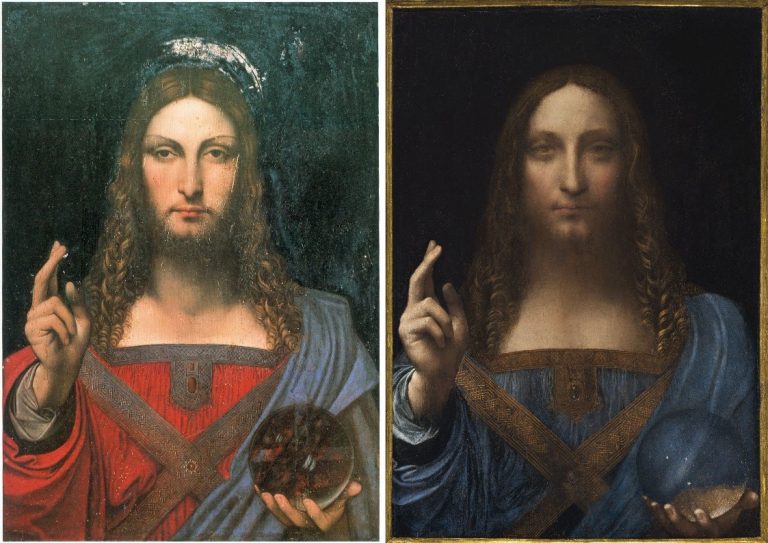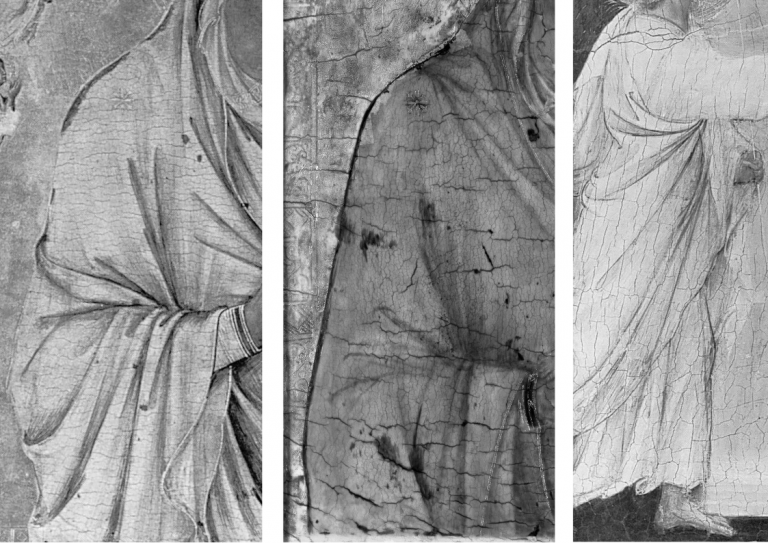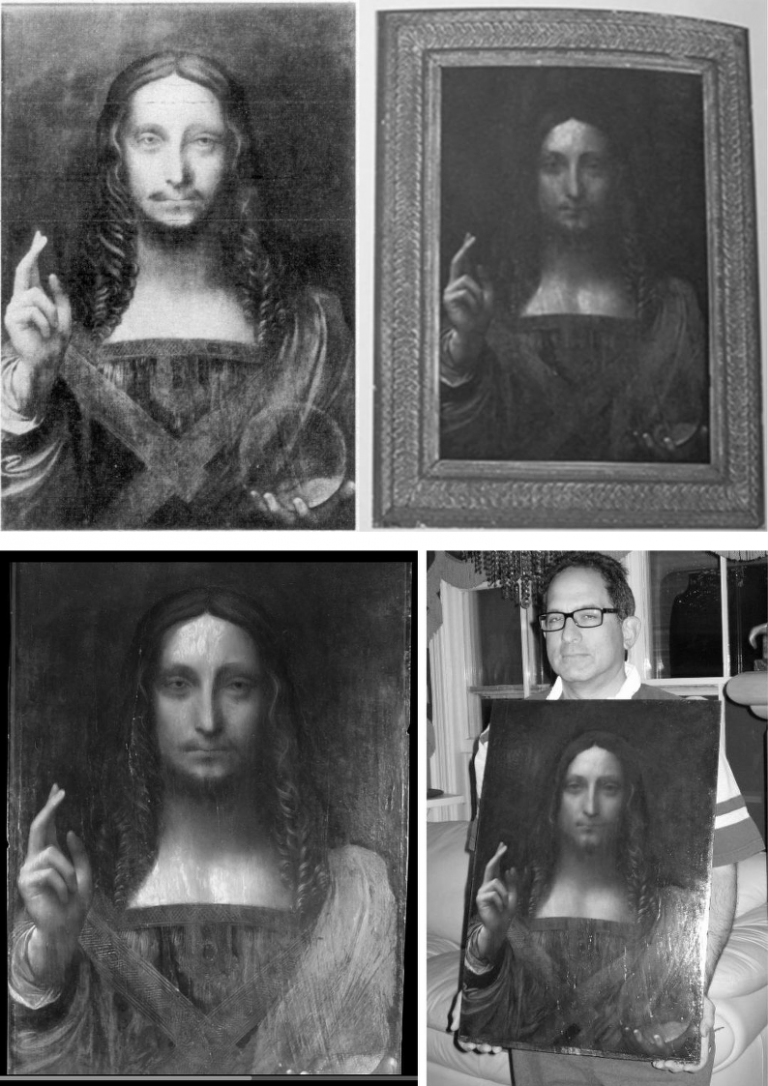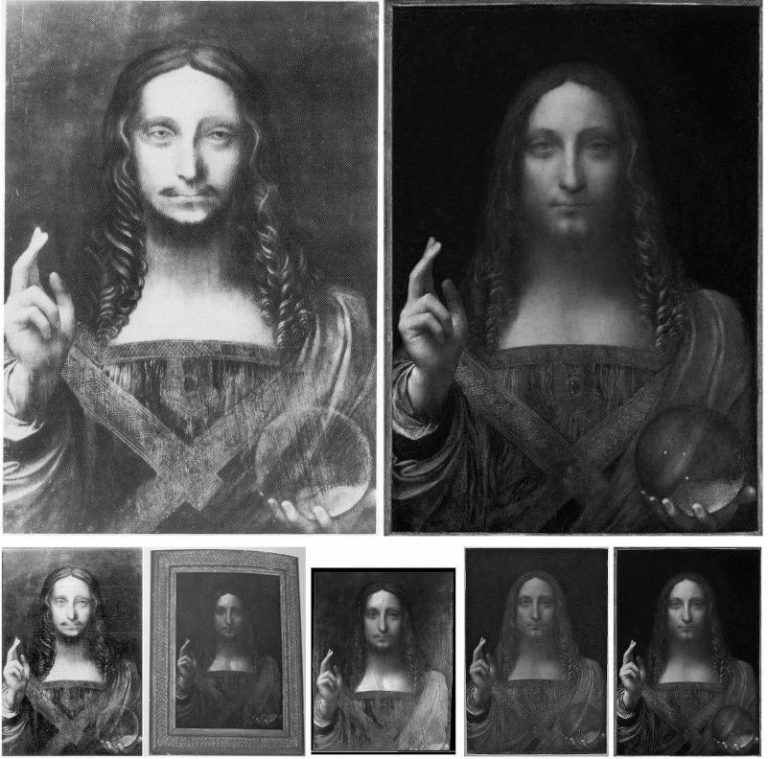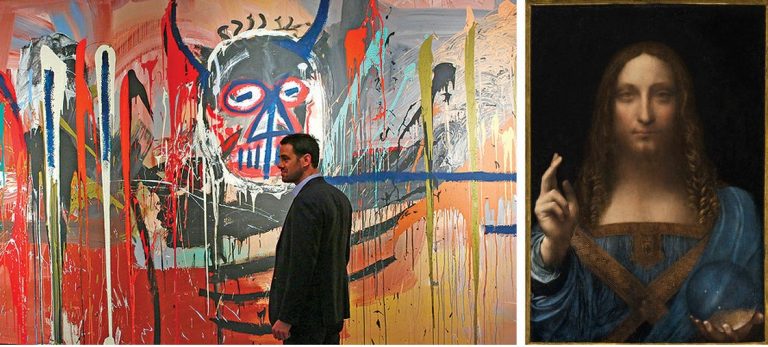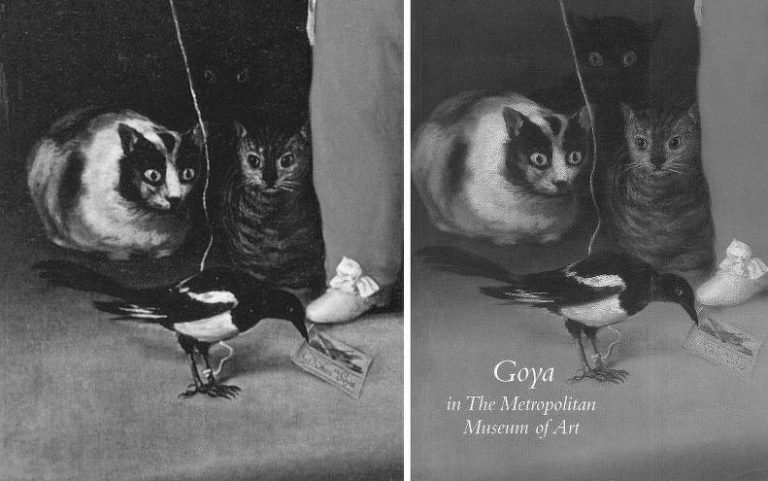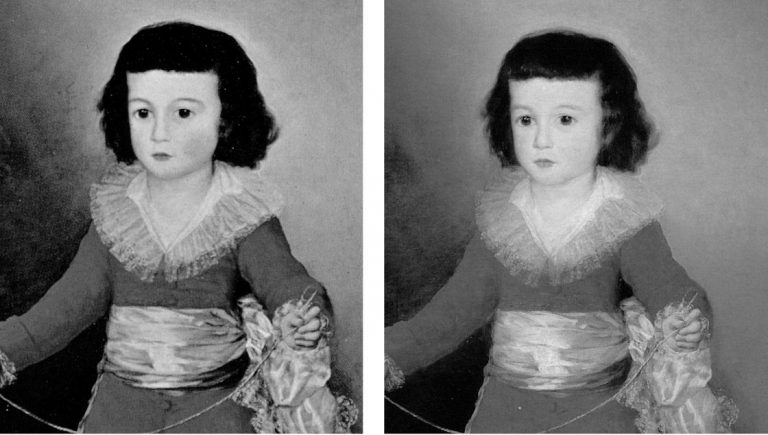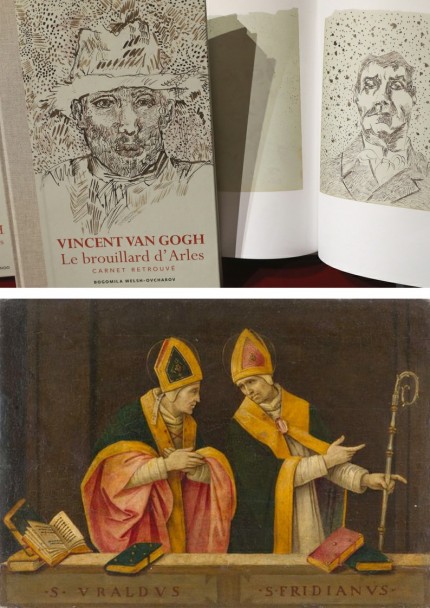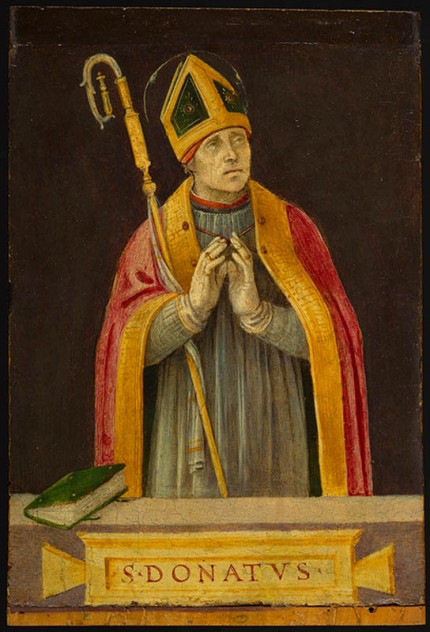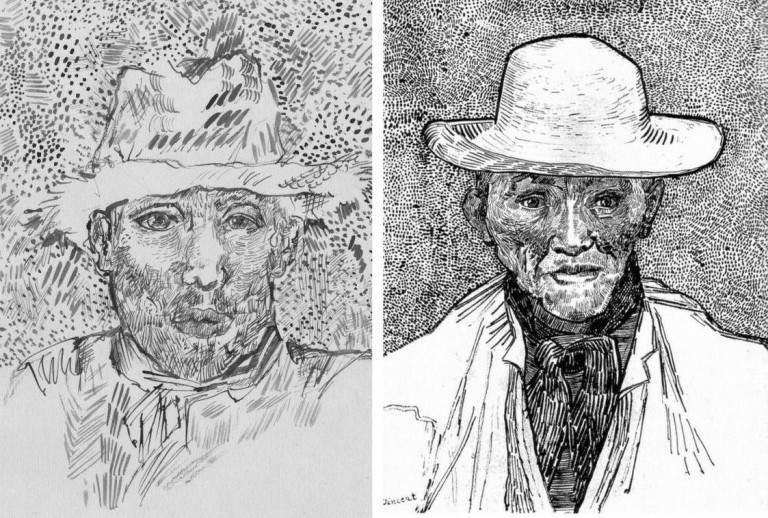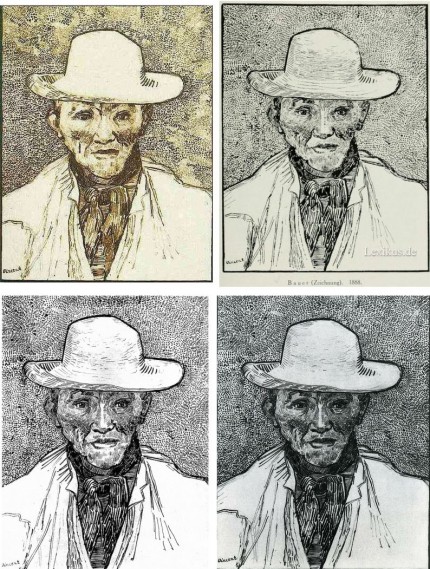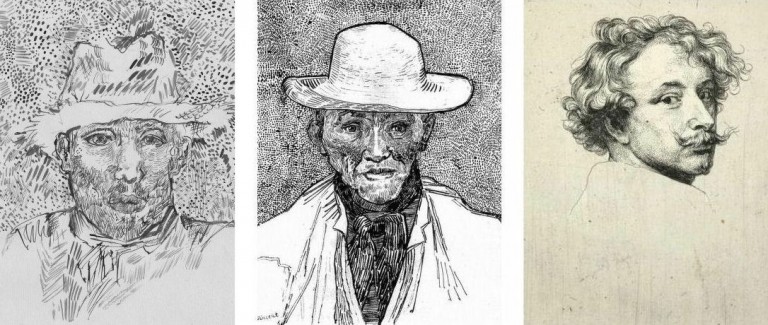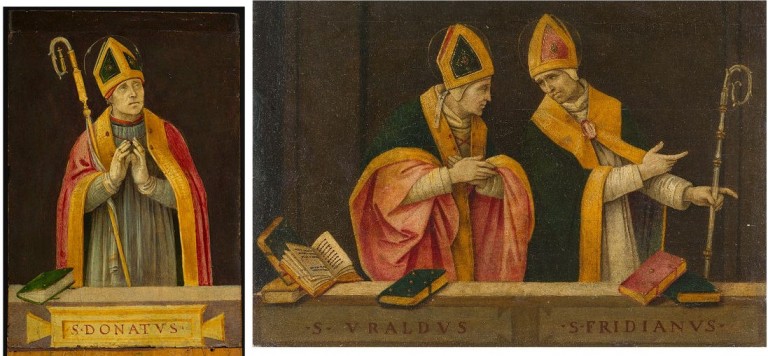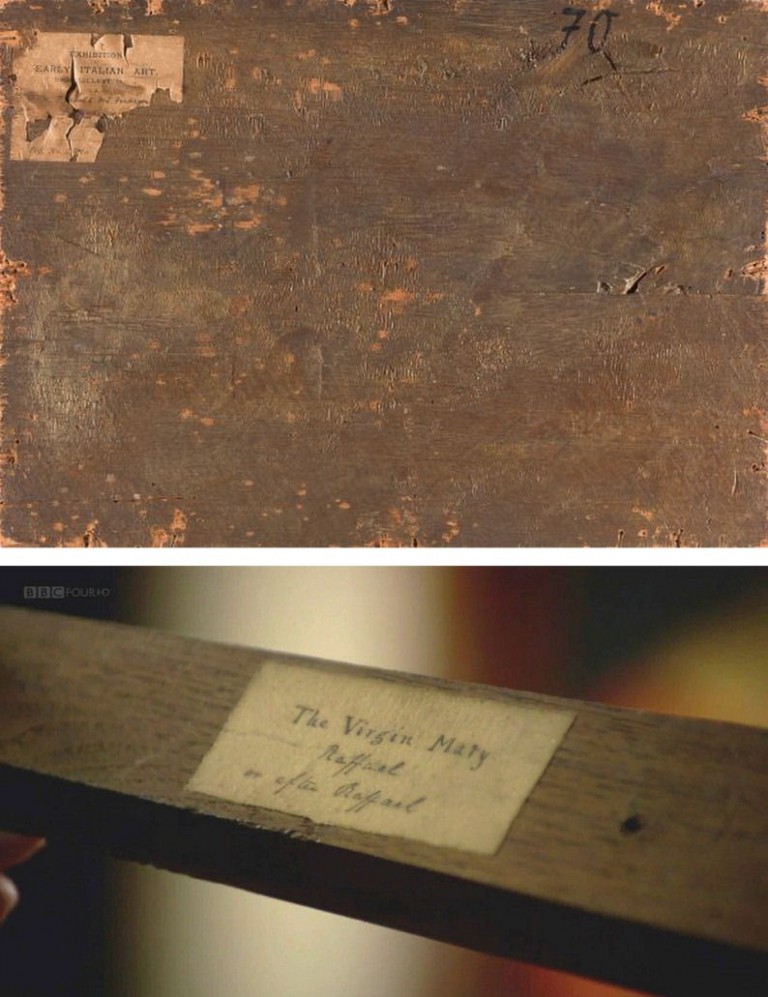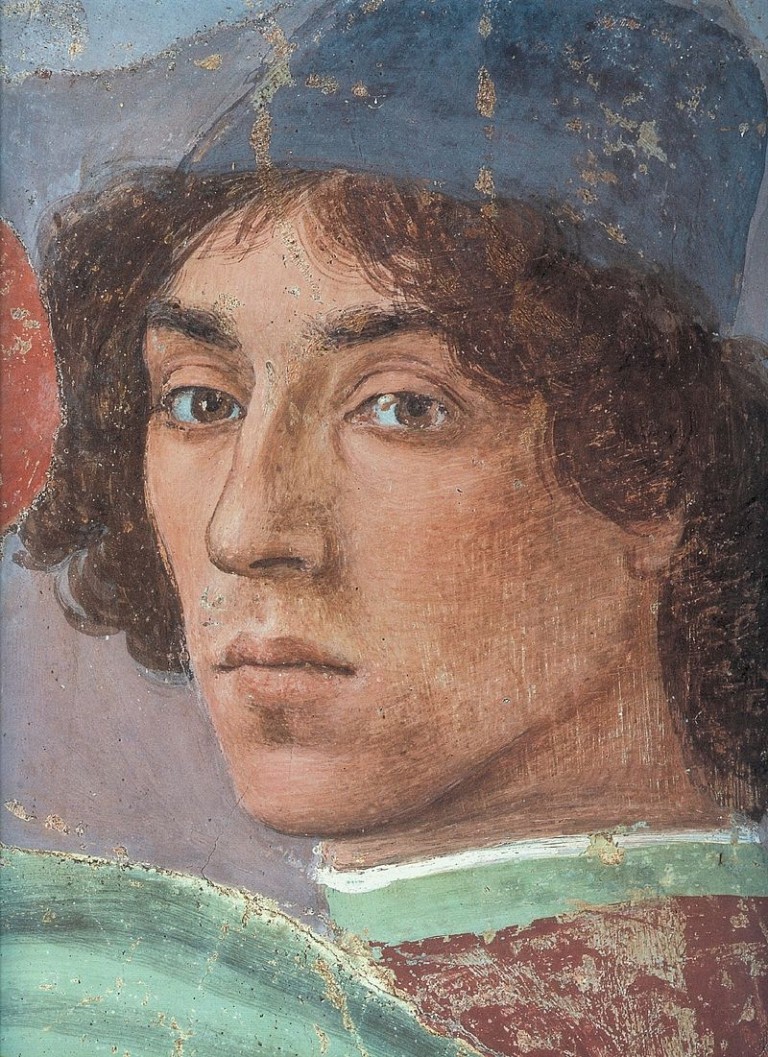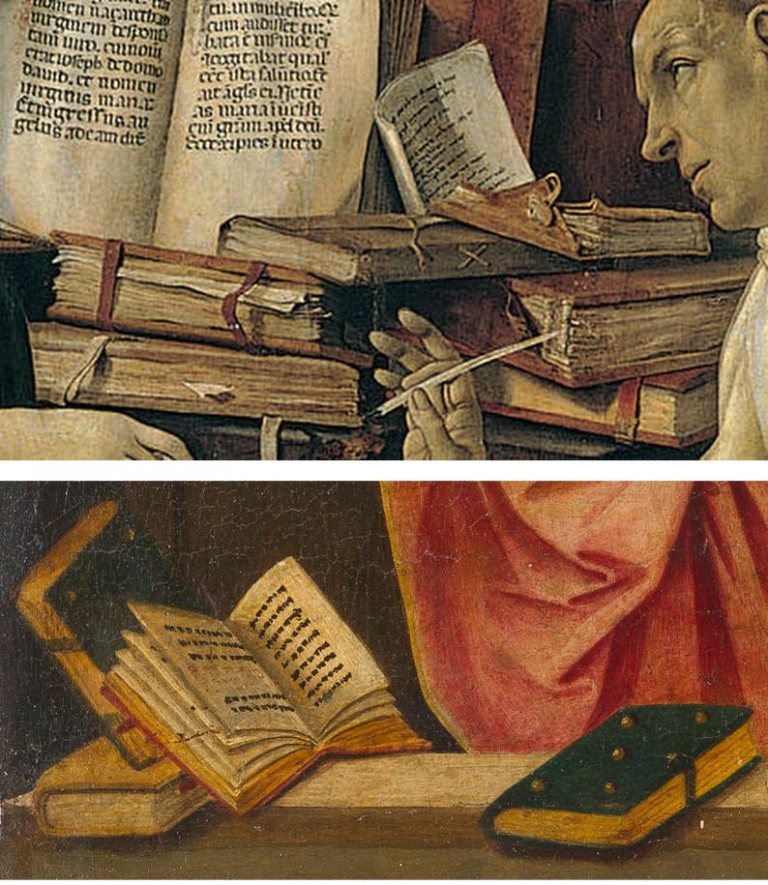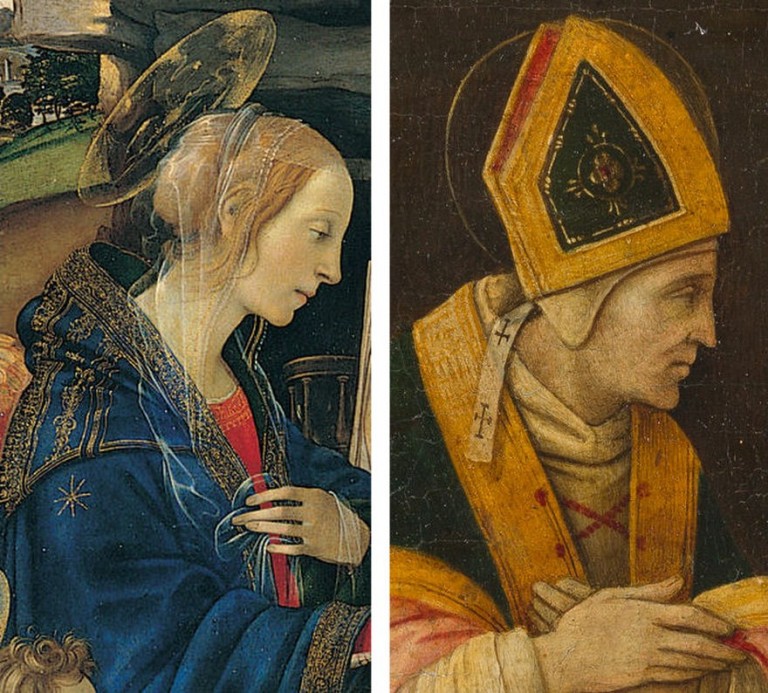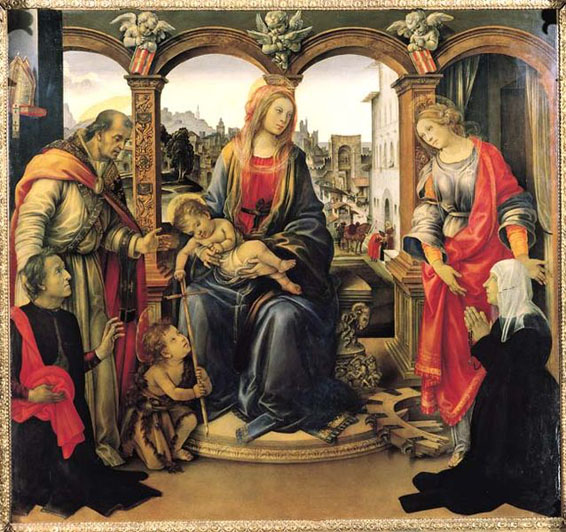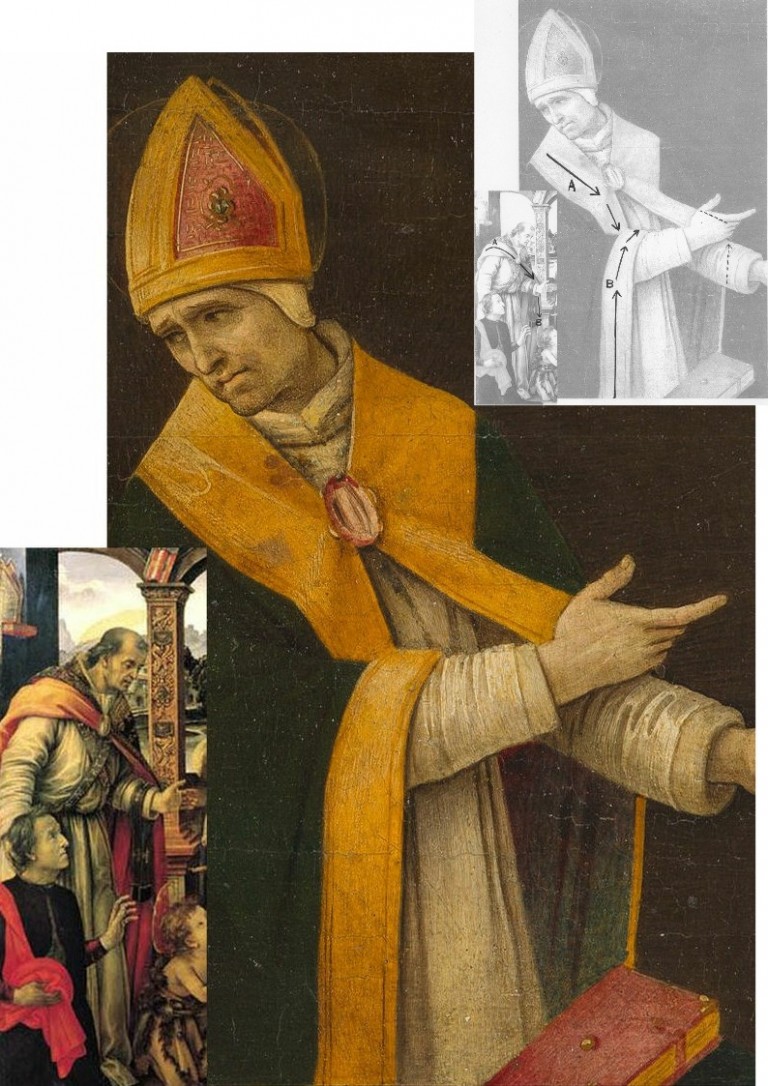The Disappeared Salvator Mundi’s endgame: Part I: Altered States and a Disappeared Book

Michael Daley writes: As the world reels from China’s latest plague, the fifteen-year Salvator Mundi Saga has slipped into never-never land. The famously disappeared picture has been likened to an opera by its instigators and is set to become a musical in 2022 in which “artistic liberties will be freely taken to make an enlightening and entertaining experience”. Amazon is offering T-Shirts that carry the Salvator Mundi not as it looked in 2017 when it disappeared but as it looked in 2011 when first presented as a Leonardo at the National Gallery (see below, Fig. 3). The restorer’s own paintbrushes (which had been used to produce three distinctly different states or appearances) were auctioned on eBay with a $1,000 reserve. No bid was received. Back in the real world, before considering the rise and demise of a perpetually morphing disappeared picture’s attribution upgrade that netted $80 million, $127 million and $450 million in two restoration guises over four years on a $1,000 purchase that was overstated tenfold by its owners, we note three further bizarre developments, including a disappeared book of technical analysis and a disappeared Louvre catalogue.
1 – THE LOUVRE’S DISAPPEARED BOOK OF TECHNICAL DATA FOR A DISAPPEARED PAINTING
Above, Fig. 1: Left, a disappeared book; right, a disappeared ascription.
On 30 March, the Art Newspaper disclosed that last year the Louvre vaporised a 45-page book of technical examinations made in 2018 on the disappeared Salvator Mundi painting by C2RMF (Centre for Research and Restorations of the Museums of France). The Editions Hazan book, Léonard de Vinci: Le Salvator Mundi (Fig. 1, above, left), had been produced for the October 2019 opening of Léonard de Vinci, the Louvre’s major exhibition marking the 500th anniversary of Leonardo’s death, but it was withdrawn shortly before the opening even though the authors reportedly considered their examinations “to have demonstrated that the work was executed by Leonardo”. (The claim, of course, is implausible: technical examinations can sometimes disprove an attribution but can never establish artistic authorship.)
A Louvre spokesman said the book, written by the Louvre curator Vincent Delieuvin and C2RMF’s Myriam Eveno and Elisabeth Ravaud, had been “a project in case the Louvre got the chance to exhibit the painting” and that because this had not happened “it is not going to be published” – which seems tantamount to saying “If we can borrow it, it’s a technically-supported Leonardo; if we cannot, it’s not”. A copy of the disappeared book has been seen by Dianne Dwyer Modestini, who had restored the picture between 2005 and 2017. Modestini feels the conclusions confirm her own, earlier, judgements, even though they “do not reveal anything I did not already know about the materials and techniques…”
2 – THE LOUVRE’S DISAPPEARED CATALOGUE WITH A NON-APPEARING, NOW DISAPPEARED PAINTING
Second, to the embarrassment of a disappeared book of technical examinations, we disclose another disappeared Louvre publication: the catalogue for the museum’s 2019-20 Léonard de Vinci exhibition was also junked and replaced shortly before the opening. The two editions of the catalogue were identical except for one detail. In the first, the disappeared painting was splashed on the front cover as by Leonardo – “Front cover: Leonardo da Vinci, Salvator Mundi (detail of cat. 157), Ministry of Culture, Saudi Arabia Kingdom”. (See Fig. 1, above, right.) The author of that endorsing entry was Vincent Delieuvin, who co-curated the exhibition with Louis Frank. Delieuvin’s public commitment to the Leonardo attribution was made in the catalogue of a small 2016 Leonardo exhibition at the Italian Embassy titled: Léonard en France. Le maître et ses élèves 500 ans après la traversée des Alpes, 1516-2016 (Leonardo in France. The master and his pupils 500 years after the crossing of the Alps, 1516-2016). There, Delieuvin ventured of the now-disappeared picture “…Leonardo da Vinci’s Salvator Mundi whose autograph version seems to have reappeared very recently, unfortunately in very bad condition. The circumstances of the creation of this work are unfortunately not known.”
In the second printed catalogue, Delieuvin – with no explanation for the volte-face – correctly describes the Salvator Mundi as the Leonardo studio work that entered the Cook Collection in 1900 (on no provenance and that was later sold for £45) – namely: “Salvator Mundi, version Cook, vers 1505-1515″. A second Leonardo studio version, the de Ganay Salvator Mundi, was included in the Louvre exhibition as catalogue no. 158: “Salvator Mundi, version Ganay”. The choice of substitute may have been pointed: the Ganay picture had flopped when proposed in 1978 and 1982 as the supposedly lost autograph Leonardo prototype Salvator Mundi painting of which no record exists. Such notwithstanding, provenance claims made on behalf of that candidate were adopted and merged with those made on behalf of the Cook version. Because of the non-appearance of the disappeared Cook version, originally no. 157 in the catalogue, there is now a gap in the published catalogue between cat. 156 and cat. 158. That numerical lacuna testifies to the fateful loss of institutional support for the second would-be autograph Leonardo Salvator Mundi in forty years. (See Fig. 1, above, right.)
Above, Fig. 2: Left, the de Ganay Salvator Mundi which, in 1978 and 1982, had been proposed as a long-lost Leonardo prototype painting; right, the more heavily damaged and made-over ex-Cook Collection Salvator Mundi, which was presented as a long-lost Leonardo prototype painting at the National Gallery in November 2011.
3 – SOME DAY, MAYBE, NEVER…
After fetching $450 million in 2017 at Christie’s, New York, as Leonardo’s (supposedly) autograph, (supposedly) long-lost, (supposedly) iconic male equivalent of the Mona Lisa, the painting (really did) disappear without a trace, leaving the world bemused and the picture’s briefly “vindicated” advocates to play blame games. It was promised the painting would be launched as a Leonardo at the official opening of the United Arab Emirates spanking new Abu Dhabi Louvre Museum in 2018. That did not happen. It was said the painting would star as A Discovered Leonardo at the Paris Louvre’s grand 2019 Leonardo blockbuster. That did not happen either, just as we had predicted. The Wall Street Journal has reported that Saudi Arabia’s Ministry of Culture has possession of the disappeared painting and plans to store it while deciding whether or not to build an exclusively Western art museum to house this once again officially-deemed Leonardo school Christian image (“Saudi Arabia’s Secret Plans to Unveil Its Hidden da Vinci-and Become an Art-World Heavyweight”, 6 June 2020).
A MUSEUM FOR A PICTURE NO MUSEUM WANTED
It might seem unlikely that the disappeared former Leonardo Salvator Mundi will reappear in a purpose-built museum of Western art in Arabia when it is now well known (thanks to Ben Lewis’s 2019 lid-lifting book The Last Leonardo) that the picture had been offered to, and rejected by: the Getty Museum; the Hermitage; the Museum of Fine Arts, Boston; the Vatican; the Dallas Museum; a German auction house; Berlin’s Gemäldegalerie, and even, at a knock-down $80 million, to the Qatari royal family.
WHY DID THE BIG WESTERN MUSUMS BACK OFF?
The National Gallery launched the Leonardo attribution in its 2011-2012 Leonardo blockbuster, Leonardo da Vinci: Painter at the Court of Milan, after covertly helping to assemble its proclaimed “Unusually Uniform Scholarly Consensus”. The gallery made no attempt, however, to buy the Salvator Mundi. Similarly, and notwithstanding National Gallery claims of blanket endorsement by the Metropolitan Museum’s curators of pictures and drawings, the Met, too, did not buy what Christie’s dubbed “The Last Leonardo”. Despite publicly avowing support for the Leonardo ascription, the Met’s Chairman of European Paintings, Keith Christiansen, has (so far as we know) written nothing in its support – in marked contrast to his decisive role in the museum’s 2004 purchase of the tiny Madonna and Child that Christie’s offered as the “The Last Duccio”. Where the Met’s director, Philippe de Montebello, shuffled financial mountains to acquire the Duccio at Christiansen’s behest, Thomas Campbell, de Montebello’s successor from 2009 to 2017, tweeted after the 2017 $450 million Salvator Mundi sale that he hoped the mystery buyer “understands conservation issues” and had “read the small print”. Many were sickened by Christie’s globally-hyped removal of a sixteenth century painting from an old masters’ sale context to offer it (buttressed by cross-linked and mutually assured sale guarantees) among trophy modernist “icons” – and all on a picture Christie’s had passed over when it was offered in 2005.
“SALVATOR MUNDI IS A PAINTING OF THE MOST ICONIC FIGURE IN THE WORLD BY THE MOST IMPORTANT ARTIST OF ALL TIME” – LOÏC GOUZER
Above, Fig. 3: Left, Loïc Gouzer, Christie’s former co-chairman of Americas post-war and contemporary art, next to Jean-Michel Basquiat’s Untitled at a press preview; centre, the Salvator Mundi as when sold as a Leonardo at Christie’s, New York, on 15 November 2017; right, the Amazon T-Shirt sporting the Salvator Mundi as it appeared at the National Gallery in 2011 with many more folds visible in the drapery at Christ’s (true) left shoulder – see below, Figs. 8, 9 and 10.
Above, Fig. 4, top row: Left, a c. 1913 photograph of the Salvator Mundi when in the Cook Collection, England; right, the Salvator Mundi as when sold at Christie’s in November 2017. Bottom row: the same time-line changes with three intermediary states from 2005; 2005; and 2011-2012 (when exhibited as a Leonardo at the National Gallery).
THE INTENSIFYING CRISIS OF ART MARKET CONNOISSEURSHIP
The epically long Salvator Debacle has put the abiding old masters’ connoisseurship crisis centre stage. To restate the intractable root problem: supply is finite – the old masters aren’t working any-more; most big-name works are already in museums; and infinite new global money craves art that bestows cachet and respectability. In February 2018, Guillame Cerutti, Christie’s CEO, purred: “our major clients are looking for trophies. They want quality and rarity in any field. This painting had both aspects, it ticked all the boxes”. Such a global trophy-hungry market can only be grown with dramatically upgraded art trade “sleepers” or outright forgeries. Both stand on restorers’ transforming skills which, along with claimed technical discoveries, licence scholars’ elevation of formerly nondescript works to revered Lost Masterpiece status.
MUSEUMS BEWARE
For Big-Name buyers, risks are high and can trip the grandest museums. The Metropolitan Museum’s David was one of its most popular paintings… until it wasn’t a “David” anymore. In 2004 the Met’s director, Philippe de Montebello, spoke of the “Stoclet Duccio” Madonna and Child as “Filling a gap in our Renaissance collection that even the Metropolitan had scant hopes of ever closing, the addition of a Duccio will enable visitors for the first time to follow the entire trajectory of European painting from its beginnings to the present. Moreover, the Duccio Madonna and Child is a work of sublime beauty. This was a unique opportunity to not only to add a masterpiece to the Museum’s holdings but to give its collections a new dimension.”
The institutional gush was infectious: “The Stoclet Duccio – we can now proudly call it ‘the Metropolitan Duccio’ – is an astonishing achievement”, wrote the New York restorer/some-time dealer, Marco Grassi, who likened the picture’s emergence to a discovered Mozart quartet. The disappeared Salvator Mundi is now likened by its original owners/supporters to the discovery of a new planet: “Paintings by the master are as significant culturally as the planets are celestially”. (It must seem cruel to have discovered and lost a planet in six short years.) Circumspection would have been prudent for Grassi and de Montebello: the Stoclet vendors had prepared a “four-inch thick” legal contract document and refused to allow the picture to be examined technically by the three big museums (the Met, the Getty and the Louvre) selected by Christie’s to bid in a private treaty sale. In 2003, the vendors had withdrawn the picture at the last moment from a big Duccio exhibition in Siena at which specialists would have had the first opportunity since 1935 to examine the picture – not one of the four Duccio scholars who had published monographic studies since 1951 had ever seen the picture which was known only by an old black and white photograph.
MARKETING “A LAST DUCCIO” AND “A LAST LEONARDO” AT CHRISTIE’S, NEW YORK
Above, top, Fig. 5: The Met Duccio as first photographed before 1904 (left); and as seen when sold in 2004.
Above, Fig.6: The disappeared $450 million Salvator Mundi as seen in c. 1913 (left); and as seen when sold at Christie’s, New York, in 2017.
In 1901 no one thought the tiny Madonna and Child (Fig. 5, above, left) a Duccio. Some thought it a Sano di Pietro. The picture had emerged after 1900 and, just like the Salvator Mundi (above, Fig. 6), it did so without provenance. It was said to have been found in a Tuscan antiques shop by Count Stroganoff, a Russian friend of Bernard Berenson and a big collector of “inediti” works that had not appeared in scholarly publications or exhibitions. Stroganoff had it restored and cradled. When, after buying it, Met conservators removed the cradle in 2005 (the year the Salvator Mundi was bought in a provincial U.S. sale for less than the low estimate of $1,200 – for $1,000 plus a $175 charge – it, as mentioned, having been turned down by Christie’s), they found that the panel’s originally gesso-ed back had been scraped down to the bare wood which bore a pencilled ascription to “Segna della Buoninsegna”, an apparent confusion between the Ducciesque painter Segna di Buonaventura and Duccio. In 1904 the head of the Uffizi Gallery judged it “in the manner of Duccio”. When an exhibition of early Sienese painting was held in 1904, a friend of Berenson’s, Carlo Placci, commended a late inclusion of Stroganoff’s recently restored picture which by then was incorporated within a larger frame bearing a metal plaque announcing a Duccio. Stroganoff had attributed his own antique shop purchase. Berenson’s circle would usher it into stardom at a time of considerable intellectual and financial crisis for the scholar – his principal source of income had dried; finding part-replacements for it were proving elusive; he had stopped writing. (Ironically, Berenson had held hopes until 1904 of finding employment as an advisor on Italian purchases at the Metropolitan Museum of Art.)
By 1904, as Frances Vieta discovered, Stroganoff had no fewer than eight similarly small gold background Sienese style panels, one of which was ascribed to Duccio’s follower Simone Martini and later bequeathed to the Hermitage in St. Petersburg. The “Simone Martini” had been dismissed in 1901 by the art historian Giorgio Bernardini as “so heavily restored in the skin tones, and in the red and blue robes, that it is not easy to attribute to anyone.” After seeing it at the Hermitage in 1929, George Martin Richter complained (Burlington Magazine): “Beneath this mantle there is concealed not an organically constructed body but a form rather suggestive of a bag full of washing.”
For all the Christie’s Hype, the Met had bought a Berenson Family-accredited pig in a poke. The museum came under challenge. In 1984 the now c. $50 million picture had been rejected by one of the Big Three Duccio Specialists, Florens Deuchler. ArtWatch International’s founder, Professor James Beck, wrote to the Met’s Chairman, calling for an inquiry and advising the museum to ask for its money back (see Beck’s, From Duccio to Raphael – Connoisseurship in Crisis, 2006, Italy, chapter 6 and Addendum). The Duccio pedigree, like that of the Salvator Mundi, is short, modern and precarious. The Salvator Mundi had no pre-20th century history. The Met’s official history of the Duccio begins not in 1901, when no-one considered it a Duccio, but in 1904 after it had been attributed by Bernard Berenson’s wife, Mary Logan (once), and (twice) by Berenson’s protégé, Frederick Mason Perkins, who trained in music, not art history. Christiansen elaborated: “from that point on the picture has held a central place in the Duccio literature”. Central, but with an unseen and unexamined work that had been dismissed by scholars on its six centuries-late emergence. The then 28-year old Perkins, is cast by Christiansen as a leading specialist in Sienese painting when Logan had written his first article and most of his first book.
Worse, as Vieta further established, Perkins was a fount of lucrative attributional errors. In 1923, he advised Helen Frick (then creating the incredible scholarly resource that is today’s Frick Research Library) to buy two huge marble sculptures from an antiques dealer for $150,000. He attributed these “wonderful” sculptural “masterpieces” to Duccio’s heir, Simone Martini. They had recently been made by the sculptor/forger, Alceo Dossena. Perkins’s fee was ten per cent. In 1933 he attributed an unpublished Madonna and Child surrounded by Angels to Duccio in an article carried in La Diana. The Belgian collector Adolphe Stoclet, the then owner of the now-Met Duccio, bought that second “Perkins Duccio”. In 1989 it was loaned to the Cleveland Museum of Art and there identified by Gianni Mazzoni, an Italian scholar of Sienese art and its forgers, as by the forger Icilio Federico Joni – which experience might have chilled the Stoclet family. Joni is known to have run a little factory of forgers whose works were put onto the market by middlemen, one of whom was Perkins himself. The lynchpin of Christiansen’s case for the “Met Duccio” is Berenson’s subsequent (private) hymning of the Stoclet picture as the loveliest and most characteristic thing Duccio ever did to the Duveen firm which paid him ten per cent on Italian purchases. Despite Berenson’s effusions, Duveen would not touch the “very small and ineffective” picture with a “nearly black” robe.
AN UNPUBLISHED TECHNICAL EXAMINATION AT THE MET
A top-secret post-purchase technical examination of the Duccio was carried out at the Metropolitan Museum. Staff were forbidden to talk to the press. No reports were published. The findings were discussed by Christiansen in the February 2007 Apollo. That article carried an x-ray of the painting showing modern, round-headed, wire nails underneath the picture’s ancient, badly distressed, “candles-burnt” gesso-ed frame. That hard, subversive material fact drew no comment (- other than ours in three consecutive issues of The Jackdaw, in 2008-09, as reprised in this post.) No comment was made, either, about the Met Duccio’s eccentric and pronounced craquelure. Scarcely less remiss than these “material” silences was the Met’s failure to acknowledge and address the uncharacteristically sloppy drawing of the figures, as revealed by infra-red imaging (see Fig. 7, below, centre).
Above, Fig. 7: Left, an infra-red image of the National Gallery’s Duccio triptych (detail); centre, an infra-red image of the Met Duccio (detail); right, an infra-red image of the National Gallery’s indisputably Duccio panel, The Annunciation.
De Montebello, Christiansen and the Met picture restorer Dorothy Mahon travelled to London in autumn 2004 to view the Duccio at Christie’s. They were buying “blind” (unable to conduct technical examinations of the kind made on the other Stoclet/Perkins Duccio) and in knowledge that “the Louvre was working on trying to get the money together”. They spent an hour and a half at Christie’s where “The director made an offer for it on the spot”, and they all then went to see the National Gallery’s “rare and very beautiful Duccio triptych” – “a touchstone of Duccio’s work” (detail, above, left) so that the director “might assure himself that the two works were equivalent”. It would have been better to have gone to the National Gallery first, not only to see the triptych but to study its historical and technical dossiers, and those of the gallery’s absolutely secure Duccio Annunciation. Having bought the picture, all three “felt ‘ours’ was every bit as fine and in some respects more intimate and direct” than the triptych and was “a painting that represented the artist at the very height of his powers”. Two Duccio specialists, Deuchler and James Stubblebine, thought the NG triptych “Shop of Duccio: Simone Martini”.
Having thus bought very expensively without a trace of “buyer’s remorse”, other possible grounds for concern may have been overlooked. For example, Christie’s had won the right to conduct its private, three-museum sale by putting “a significantly higher valuation on the painting than anyone else – by multiples”, as Nicholas Hall, the international director of Christie’s Old Masters department, later told the New Yorker (Calvin Tomkins, “The Missing Madonna”, 11 July 2005). When Hall invited Christiansen (an old friend) to lunch to show him a recent transparency of the Stoclet Madonna, he was immediately smitten and proactive. As he later recalled: “‘Fantastic, how about the price?’ I asked. He told me. ‘OK,’ I said, ‘I will deal with that later,’ and then we finished our lunch.” (Danny Danziger, Museum – Behind the Scenes at the Metropolitan Museum of Art, New York, 2007.)
Had the Met officers opted to compare the under-drawing of the three works, as above, Fig. 7, before buying, they might have seen that on the quality of drawing one of the three was the other two’s inferior. If we think of the three images as a triptych, it is striking how much more fully and vividly realised the draperies and figures are as form in the two “wings”. Consider the left and centre under-drawing: in the outer image the drapery folds are not notionally indicated with lines that converge, as on the Met picture, but are realised, in anticipation, as autonomous three-dimensional folds and hollows that move over and around the implicit body within – one senses, for example, precisely where the unseen elbow is located, this being no “bag of washing”. The contour on the National Gallery Madonna’s outer edge is not depicted, as is the case in the Met picture, with a long un-lovely single continuous unbroken line of few deviations along which it is impossible to sense the elbow’s location. Rather, it is conceived and shown as a record of the points at which the forms and undulations of the cloth turn away from the viewer. Such differences of drawing speak of radically differing degrees of plastic/sculptural sensibility and comprehension. That on the left is greatly and decisively more sculptural, dynamically expressive, and plausible as a figure adjusting itself to support the weight of a child. Drawing has rightly been described as the probity of art and, as such, its study and evaluation must be considered one of the most pertinent and indispensable tools of critical analysis.
In the face of artistic weaknesses Christiansen blusters: “The drapery of the Virgin is astonishingly three-dimensional in the way it falls over the arm; it’s like a Roman sculpture.” All style judgements are relative: this is more, or less, or identical with, that. When drawing is weak, associated aspects often prove deficient. Viewing the triptych immediately after the Christie’s Duccio, Christiansen noted the former “struck a slightly different key than the picture we had been examining.” That difference, as the Met’s subsequent examinations disclosed, had a material basis. Ultramarine pigment was used in the triptych as opposed to the Met picture’s cheaper azurite. Moreover, the painted relief of the triptych’s ultramarine blue drapery was modelled not so much by progressive (and chromatically-debilitating – as Duveen had complained) dilution with white pigment, but by the addition of carbon black shading enriched by a red glaze – a tri-partite finish made with the best materials – and one that was emulated by Modestini on the background of the Salvator Mundi. Modestini has given two accounts of her actions. They both merit attention, because both are more detailed, and frank, than is commonly encountered in restoration reports.
REPLICATING HISTORICAL AUTHENTICITY TO PRODUCE A “DIFFERENT, ALTOGETHER MORE POWERFUL IMAGE”
Writing in a 2012 conservation report (see below), Modestini recalled:
“There were actually two stages of the current restoration. In 2008 when it went to London to be studied by several Leonardo experts, there was less retouching: I hadn’t replaced the glazes on the orb, finished the eyes, suppressed the pentimenti of the thumb and stole, and several other small details, but, chiefly the painting still had the mud-coloured modern background that was close in tone to the hair. Two years later I was troubled by the way the background encroached upon the head, trapping it in the same plane as the background. Having seen the richness of the well-preserved browns and blacks in the London Virgin of the Rocks”, and based on the fragments of black background which had not been covered up by the repainting, I suggested to the [then two] owners that it might be worthwhile to try to recover the original background and finish the incomplete restoration.
“I began to remove the overpaint mechanically under the microscope. Where it had been protected by the Verdigris [layer, that had been scraped off “at an unknown date and replaced by a mud-coloured background”], the original background was intact, and much of it survived under messily applied fill material. The difference between the original black and the modern brown was dramatic.
“The initial cleaning was promising especially where the Verdigris had preserved [because applied soon after?] the original layers. Unfortunately, in the upper parts of the background, the paint had been scraped down to the wood and in some cases to the wood itself. Whether or not I would have begun had I known, is a moot point. Since the putty and overpaint were quite thick I had no choice but to remove them completely. I repainted the large missing areas in the upper part of the painting with ivory black and a little cadmium light, followed by a glaze of rich warm brown, then more black and vermilion. Between stages I distressed and then retouched the new paint to make it look antique. The new colour freed the head, which had been trapped in the muddy background, so close in tone to the hair, and made a different, altogether more powerful image. At close range and under strong light the new background paint is obvious, but at only a slight remove it closely mimics the original.
“The retouching was done with time-tested materials.” Viz: “with dry pigments bound with PVA AYAB. Translucent water colours, mainly ivory black and raw siena, were used for final glazes and to draw [fake age] cracks. For the black background both AYAB and Maimeri Colori per restauro were used. Except for the background, I mainly used treble 0 sable watercolor brushes in a series of vertical passes until the area of loss matched the surrounding material.”
RESTORATIONS BEGET RESTORATIONS
In her 2018 memoir, Masterpieces, Modestini recalled:
“When the painting returned [in 2008 from London] to New York, I saw it on many occasions and became increasingly dissatisfied with my hastily concluded restoration. This is inevitable, especially when the painting is a damaged work by a great artist. Although I was aware of this, I itched to have it back. Leonardo’s [sic] Virgin of the Rocks in London had just been cleaned, and I made an appointment to see it. It is relatively well-preserved and, at that time, the only Leonardo that was not encumbered with centuries-old, thick, yellow, decayed coats of varnish like the Mona Lisa and the St John the Baptist in the Louvre. When I saw it, I was struck by the richness and depth of Leonardo’s blacks and realized that the principal problem of the Salvator Mundi was that the image was imprisoned by the nineteenth-century, sludge-colored repaint of the background. In a few areas, mostly around the contours of the figure, the original deep black was visible, and I knew from one [!] of the cross sections that Leonardo had paid great attention to it, building it up with four layers consisting of two different blacks, and black mixed with vermilion. I explained this to Robert [Simon], who immediately understood.
“For retouching [aka repainting] I use high-quality dry pigments, and I had a number of different blacks to work with – bone black, which Leonardo was known to favor, and a sixty-year-old tin of finely ground, pure ivory black that I had inherited from Mario [Modestini], which is no longer made. I had never used it but suddenly remembered Mario talking about how special it was…After I had polished and distressed my new paint, the result was reasonably satisfactory, at least when compared to the previous iteration. The difference it made to the painting was astounding: the great head surged forward and became much more powerful. I allowed myself to think that the decision I had taken was not so terrible after all. With the figure now more prominent and three-dimensional, some minor areas of loss and wear began to clamor for attention. This sequence is an essential part of the process of restoring a damaged painting.
“Luke Syson, the curator of the National Gallery’s Leonardo exhibition, asked to borrow the painting, notwithstanding some cavilling from colleagues about exhibiting a work that was on the market…”
Where Modestini was licensed by the owners to act as a painter-in-arms with Leonardo, Christiansen downplayed the triptych’s greater richness of effects and materials by deeming it “Obviously…a deluxe object” made for a rich client as opposed to “the first owner of the Metropolitan’s [who] was also someone of wealth or social standing”. If the force of that distinction is not immediately apparent, there are other, no less telling, differences where cost is immaterial: the triptych’s under-drawing was made with a quill pen – the instrument said to be Duccio’s favourite. That of the Met painting was made with brush… Making repeated allowances for atypical traits is never reassuring. Modestini has disclosed that although the all-blue draperies of the disappeared ex-Cook Collection Salvator Mundi are of ultramarine, it is of low grade – as was the panel on which it was painted. (In 2019 Simon reported that the ultramarine had not undergone full purification and had retained large particles of quartz.) It has been claimed, as described below, that by some technical quirk, whenever the restored Salvator Mundi is re-varnished, the forms of the true left shoulder draperies expand or contract in numbers (see Fig. 8, below) precisely as occurred between 2011 when the picture was at the National Gallery, and 2017, when it was on offer at Christie’s.
ART WORLD CLOAK AND DAGGER
Above, Fig. 8: Left, top, and detail below left, the Salvator Mundi when exhibited at the National Gallery in 2011-12 as a long-lost autograph Leonardo painted prototype Salvator Mundi; right, top, and detail below right, the (disappeared) Salvator Mundi when offered in 2017 at Christie’s, New York, as a long-lost autograph Leonardo painted prototype Salvator Mundi with “an unusually strong consensus”.
In her 2018 memoir, Masterpieces, Modestini describes how the painting was brought to her place of work at New York University’s Institute of Fine Arts’ Conservation Center in 2017:
“…I called [the Sandy Heller Group] immediately and was told the Salvator Mundi would be arriving in New York shortly and I was not to inform anyone. On Wednesday evening, July 19, the painting was delivered to the Conservation Center under guard and in great secrecy and was stored in the vault.”
Why? Does Christie’s lack safe storage facilities? Modestini seems to have made preparations for the picture to be sent on its whistle-stop global promotional tour even though she does not approve of such risks being taken: “I had some concerns…A museum would not have agreed to this but the painting was on the market, and I realized that it was essential that prospective buyers in far-flung locations could examine it in person.” With a colleague, she “supervised the reframing and packing at Christie’s.” Why, and on whose authority was it sent to an academic institution, under guard and in great secrecy before being dispatched on its global tour? And, what happened to the painting between being stored in the Conservation Center’s vault and its being prepared for that world tour by Modestini, at Christie’s, New York? For Christie’s explanation of this episode, see Dalya Alberge’s “Auctioneers Christie’s admit Leonardo Da Vinci painting which became world’s most expensive artwork when it sold for £340m has been retouched in last five years”. The Christie’s spokeswoman said to Alberge: “Prior to its presentation for sale at Christie’s, Modestini partially cleaned the passage of paint in the shoulder and the dark streaks disappeared”. So, to disappearing books and catalogues, and paintings, must be added disappearing features within a disappeared painting. It is a pity that Modestini, while describing the manner in which the Salvator Mundi painting returned to her safe-keeping in NYU’s Institute of Fine Arts, drew a veil over her own actions therein when writing her 2018 memoir Masterpieces. There are so many questions now dangling: “Why did a small painting that was cleaned in a day and had then undergone several campaigns of restoration over six-years between 2005 and 2011, receive further, covert, treatment just six years later? When Modestini first worked on the painting its varnish was “sticky”. Was it sticky once-more when sold for nearly half a billion dollars in 2017? The disappearances within the painting are one concern. Another is the differences between the picture’s appearance in 2011 when launched at the National Gallery as by Leonardo and its appearance in 2017 when offered to the world in a different guise at Christie’s, New York, as a National Gallery-endorsed miraculously discovered and recovered Leonardo. Those unexplained differences might seem encapsulated in our early split-halves composite image of Christ’s face (as shown below at Fig. 10) where there is a mismatch between the two halves. This Christ has had two faces in our times, the later one with more colour in the cheeks and more focussed eyes. Clearly, both cannot be taken as recovered authentic faces, so the real and urgent question is: Should either of them ever have been presented as Leonardo’s own work?
Above, Fig. 9: Top, left, the Salvator Mundi, c. 1913, when in the Cook Collection; top right, the Salvator Mundi as catalogued by the St Charles Gallery, New Orleans, as “After Leonardo da Vinci” for the April 9-10 2005 sale. Above, left, the Salvator Mundi as taken to the restorer, Dianne Modestini in April 2005 (with a still sticky varnish); right, the picture in May 2008 when about to be taken by Robert Simon (as above) to the National Gallery for a (confidential) examination by a small and select group of Leonardo scholars, after the first stage (as described above) of Modestini’s restorations .
Above, Fig. 10: Left, the ex-Cook Collection Salvator Mundi face, as exhibited in 2011 at the National Gallery; right, the ex-Cook Collection Salvator Mundi face, as offered at Christie’s, New York, in 2017.
A POST HOC SALVATOR MUNDI LITERATURE
As will be examined in Part II, our challenges to the perpetually mutating and “improving” Salvator Mundi were made: a) within days of its November 2011 launch at the National Gallery; b) nearly a month before Christie’s November 2017 sale; c) five days before Christie’s 2017 sale; d) the day before Christie’s sale; and, subsequently, e) in nearly a score of posts – see Endnote below. The undisclosed identity of the original owners was only uncovered in September 2018 (by The Washington Post). Until that date and disclosure, the true purchase price in 2005 was exaggerated ten-fold by both the original owners and the painting’s advocates -and therefore in all press reports over a thirteen-year period. The publication of researches that had been promised in 2011 by the owners and by the National Gallery did not occur until 2019 and, even then, it was not in full.
Four recently published books now comprise a small, belated literature on the rise and demise of the long-unloved Leonardo School work that morphed into the world’s most expensive and least visible picture. They were: Living With Leonardo – Fifty Years of Sanity and Insanity in the Art World and Beyond, by Professor Martin Kemp, London, 2018; Masterpieces (“Based on a manuscript by Mario Modestini” and with informative chapters on: the Salvator Mundi; Cleaning Controversies; and, Misattributions, Studio Replicas and Repainted Originals) by Dianne Dwyer Modestini, Italy, 2018; The Last Leonardo – The Secret Lives of the World’s Most Expensive Painting, by Ben Lewis, London, 2019; and, Leonardo’s Salvator Mundi & The Collecting of Leonardo in the Stuart Courts, by Margaret Dalivalle, Martin Kemp, & Robert B. Simon, Oxford, 2019.
Until those four works appeared, the literature consisted of the catalogue entry “Christ as Salvator Mundi, about 1499 onwards” in the National Gallery’s 2011-12 Leonardo exhibition catalogue by its curator, Luke Syson; and, Dianne Modestini’s account of the Salvator Mundi’s restoration and art historical credentials that was delivered in January 2012 at a National Gallery conference and published in 2014 as “The Salvator Mundi by Leonardo da Vinci rediscovered History technique and condition” in Leonardo da Vinci’s Technical Practice, Paintings, Drawings and Influence, Ed. Michel Menu, Paris. Both Syson’s and Modestini’s accounts acknowledged indebtedness to the private researches of one of the picture’s owners, the New York dealer, Robert Simon.
Specifically, Syson declared in 2011: “This discussion anticipates the more detailed publication of this picture by Robert Simon and others. I am grateful to Robert Simon for making available his research and that of Dianne Dwyer Modestini, Nica Gutman Rieppi and, (for the picture’s provenance) Margaret Dalivalle, all to be published in a forthcoming book.” In 2014 Modestini acknowledged having benefited from “…the knowledge and good eyes of Robert Simon with whom I worked closely on the restoration for six years and who generously shared with me the results of his research for this paper. I am especially indebted to Nica Gutman Rieppi, Associate Conservator in the Kress Program at the Conservation Center of the Institute of Fine Arts, New York University, who took the samples, made the cross-sections and coordinated the analytic work which was carried out with great thoroughness, precision and dedication by Beth Price and Kenneth Sunderland, research scientists at the Philadelphia Museum of Art, with the help of Dr Thomas J. Tague of Broker, Billerica, Massachusetts who carried out the ATR FTIR analysis of the sizing.”
That research had still not been published in 2013 when the picture was sold privately and under (Simon has revealed) a non-disclosure agreement through Sotheby’s for $80 million. The research had not been published by 2017, when Alan Wintermute of Christie’s wrote (in “Leonardo’s Salvator Mundi”, one among other endorsing/bolstering essays by Frances Russell, Dianne Modestini, David Franklin and David Ekserdjian, in the auction house’s 2017 Salvator Mundi book/catalogue): “The reasons for the unusually uniform scholarly consensus that the painting is an autograph work by Leonardo are several… The present painting, although only recently discovered, has already been extensively studied, with a remarkable campaign of research lead by Dr. Robert Simon. The most insightful and broad-ranging examination of the painting was presented by Luke Syson in the 2011 catalogue of the Leonardo exhibition in London. The following discussion depends heavily on Dr. Syson’s entry, which itself drew on the unpublished research made available to him by Robert Simon, Dianne Dwyer Modestini, Nica Gutman Rieppi, Martin Kemp and, for the picture’s provenance, Margaret Dalivalle…” Having thus drawn the scholarly research wagons around the picture (and the auction house) Wintermute disclosed that the still-unpublished researches by Dalivalle, Kemp and Simon would not be published until 2018 – which was to say, a full seven years after the painting had been declared and exhibited as a Leonardo, at the National Gallery. In the event, and even with its pared-down authorship (see below), the book would be further delayed until 2019, by which date the mystery over the subsequently disappeared picture’s ownership and whereabouts had deepened yet further.
The Simon Researches had originally been earmarked for a book of essays to be published by Yale University Press and sold at the National Gallery’s “Leonardo da Vinci: Painter at the Court of Milan” exhibition. That book proved to be the first on this Salvator Mundi picture that failed to materialise. Reasons for its demise were volunteered by Professor Martin Kemp in his Living with Leonardo:
“Robert [Simon] thought it was a good idea to publish a book of essays by various authors, including Margaret Dalivalle and myself. Yale University Press, which does not normally publish monographs on single paintings, was signed up as publisher. I was happy to go along with this, while expressing reservations about a volume with multiple authors being finished on time. Academics are notably adept at missing deadlines, and I was unconvinced that all the authors actually had anything new to say… In the event the complete book was not delivered and, deprived of the rationale of selling a good number of books at the time of the show, Yale withdrew.”
A GOOD SHEPHERD, AN UTTERLY FANTASTIC CONSENSUS AND A DONE-DEAL
The long-promised book of essays emerged in 2019 (through Oxford University Press) as the Dalivalle/Kemp/Simon compilation – but without a proper technical account of the picture’s campaigns of restoration and technical examination. Simon presents the book as “the first to treat the subject monographically” and “the first complete analysis of this essential addition to Leonardo’s oeuvre”. The authors liken their authorially-trimmed exercise to a three-act opera with each act constituting an in-depth facet of the story while “necessarily bypassing many ancillary issues”. The first act is said to chronicle the painting’s “journey from anonymity in America, with no provenance and in severely compromised condition, to its public revelation as a work by Leonardo at the exhibition in London. The six-year process of research and conservation is related by Robert Simon, who shepherded the Salvator Mundi on this remarkable journey…” When Simon took the painting to London in May 2008 (Fig. 9, above) to show it to a select group of Leonardo scholars assembled at the National Gallery, he made a good and lasting impression on Martin Kemp who, in his 2018 memoir, underscored Simon’s decisive role in the institutionally and ethically problematic attribution upgrade:
“…A general discussion followed. Robert Simon, the custodian of the picture (whom I later learned was its co-owner), outlined something of its history and its restoration. He seemed sincere, straightforward and judiciously restrained, as proved to be the case in all our subsequent contacts. We looked, we talked and we looked again. It was a remarkable occasion. By the time I left, I was determined to research every aspect of the Salvator Mundi. It seemed at first sight to resonate deeply with key aspects of Leonardo’s science of art, and his views of the role of God in the cosmos.
“I remained in touch with Robert Simon who is strongly committed to scholarly research. I learned that the eloquent painting we had viewed was in fact one of the known versions of the Salvator Mundi, formerly in the Cook Collection – previously heavily overpainted, it had now been cleaned and retouched. It had never before received serious attention; we had paid only passing attention to the black and white photograph of it [Fig. 6] that had occasionally been used as an illustration…
“All of the witnesses in the gallery’s conservation studio were sworn to confidentiality [by whom?] and the painting travelled back to New York with Robert. It was becoming ‘a Leonardo’ […and later: ‘Robert quietly introduced the Salvator Mundi to a judicious selection of experts, who – remarkably, given the usual leakiness of the art world – kept their counsel for three years. By the time the painting emerged in public there was a critical mass of influential voices who would speak in the painting’s favour.’]
“…Was it on the market? Would exhibiting it mean that the National Gallery was tacitly involved in a huge act of commercial promotion? It seemed highly likely that it was also ‘in the trade’. All I knew at this stage was that it was being represented by Robert Simon. He told me that it was in the hands of a ‘good owner’ who intended to do the right thing by it, and I did not enquire further. I was keen to consider the painting in its own right, not in relation to ownership. I speculated, of course, that Robert might have a financial interest, perhaps a share in its ownership, and I assumed he was gaining some kind of legitimate income from his work on the picture’s behalf…
“It was, however, a great surprise to find that the Salvator was to be sold at Christie’s in New York on 15 November 2017 in a mega-auction of celebrity works of art from the modern era. The auctioneers sent the painting on a glamorous marketing tour of Hong Kong, San Francisco and London. I was approached by the auctioneers to confirm my research and agreed to record a video interview to combat the misinformation appearing in the press – providing I was not drawn into the actual sale process.”
TIGHT LIPS
The anonymity of which Simon spoke was a self-imposed, prolonged tactical ploy. In 2013, the three art dealing co-owners, Alexander Parish, Robert Simon and Warren Adelson (who in 2010 bought a one-third share for $10 million, thereby giving Simon and Parish a ten-thousand-fold return in five years on their $1,000 purchase), realised that because it was known within the opaque but gossipy art trade that the picture was being offered to museums, it would be too risky to put it to public auction: “there’s not a deader-in-the-water [thing] than a picture which you put up for auction and which then bombs”, Parish told Ben Lewis: “Supposing we had put a pretty reasonable price on the Salvator Mundi – let’s say we put a $100 million reserve on it – and it tanked, where do you go from there? Absolutely dead.”
The unidentified consortium of owners had other needs for opacity. Again, Parish to Lewis: “We’re a little opaque as to the date and location of acquisition. We purposefully have never corroborated Louisiana as the place where we bought it. And I’m not going to now. Why? Because some grandson of whoever these people are who sold it is going to decide, ‘Oh, that’s my $450 million picture. Who can I sue?’” Parish identified a third danger in professional transparency: “Part of the reason for the secrecy was the mechanics, if you will, that Bob [Simon] had to employ to get the utterly fantastic consensus that he compiled. Because in academic realms, if A says yes, B’s going to say no, just to be a dick. It’s not unheard of that certain experts are contrarian just because an opposing expert has said something else.” That last may sometimes occur but witnessing such spats enables the scholarly and art market communities to gauge the relative strengths of competing or conflicted argument and evidence. In art attributions and art restorations, as in law and in politics, things work better when propositions, expertise and evidence are subject to open appraisal and interrogation. Syson’s exclusion from the May 2008 National Gallery examination of the two leading Leonardo specialists most likely to respond negatively to the picture drew Lewis’s attention and is discussed below. The National Gallery’s preference for a select group of experts was disclosed by Kemp in 2018 when he published his March 2008 invitation to the event from the National Gallery’s new director, Nicholas Penny:
“I would like to invite you to examine a damaged old painting of Christ as Salvator Mundi which is in private hands in New York. Now it has been cleaned, Luke Syson and I, together with our colleagues in both painting and drawings in the Met, are convinced that it is Leonardo’s original version, although some of us consider that there may be [parts] which are by the workshop. We hope to have the painting in the National Gallery sometime later March or in April so that it can be examined next to our version of the Virgin of the Rocks. The best-preserved passages in the Salvator Mundi are very similar to parts of the latter painting. Would you be free to come to London at any time in this period? We are only inviting two or three scholars.”
TWO OF A KIND
Note: the claimed similarities between the two supposed autograph Leonardo pictures would once have weighed heavily against the Salvator Mundi. A former director of the National Gallery and a Leonardo specialist, Kenneth Clark, had said of the gallery’s version of the Virgin of the Rocks “A pupil did the main work of drawing and modelling, and before his paint was dry, Leonardo put in the finishing touches. Most of these have been removed from the Virgin’s face but remain in the angel’s, where perhaps they were always more numerous” – see “The National Gallery’s £1.5 Billion Leonardo Restoration”. As for claims of the Cook Salvator Mundi being a long-lost prototype-for-all-other-versions, Clark judged it “one of the versions ‘less close to the [presumed] original’”. He attended the 1958 sale at Sotheby’s where this very Salvator Mundi version limped away for £45 to the United States, and hence, eventually, to Louisiana in 2005, where it would draw just two bids and fetch its $1,000 plus $175 charges – thus, below the picture’s low estimate of $1,200. Even with the overheads of a castle to find, Clark had money to spend on art. As he reported to Bernard Berenson: “In a fit of madness I even bought some pictures at the sale of the remnants of the Cook Collection, including a very beautiful Alonso Cano of Tobias and the Angel, and a Giulio Romano; also a splendid Granet. They were sold for the price of a small Cézanne pencil drawing…” (Letter, 14 July 1958, in My dear B. B. The Letters of Bernard Berenson and Kenneth Clark, 1925-1959, ed. Robert Cumming, Yale University Press, New Haven and London.)
THE NATIONAL GALLERY’S SHOW-CASING WITH EXTRA OOMPH
Four months before its 2011-12 Leonardo exhibition the National Gallery defended its decision to include the undocumented privately-owned painting as “an important opportunity to test this new attribution”. Had the painting been included on precisely those terms and shown when cleaned and not-yet restored few would have complained at an opportunity to see a recently discovered version of the Leonardo school Salvator Mundi. That did not happen. It did not happen because Penny had become an instant partisan of the proposed upgrade and was advising Simon on building a necessary consensus of scholarly support for the picture when, all the while, the picture was undergoing transforming campaigns of restoration in accordance with Simon’s (anthropomorphising) conviction that the picture should be allowed to “live once again as a work of art”. Instead of a disinterested display of the work “as-was” after cleaning and before restoration, the Gallery exhibited it after multiple bouts of restoration, the second of which was made in declared emulation of the National Gallery’s own (questionable) version of The Virgin of the Rocks, as a miraculously recovered and, supposedly “long-lost” Leonardo. Begging a monumentally large question of attribution in this manner was a plain abuse of institutional authority and – given the picture’s fanciful and preposterously bloated provenance – a gross misrepresentation of the historical record to boot.
When Ben Lewis asked Luke Syson why the work had been catalogued unequivocally as a Leonardo, he replied: “I catalogued it more firmly in the exhibition as a Leonardo because my feeling at that point was that I was making a proposal and I could make it cautiously or with some degree of scholarly oomph. It is important not to float an idea without saying where you yourself stand on it.” Syson was standing on a house of (double-borrowed) cards. When the exhibition opened on 9 November 2011 our first objection was published within days – see Figs. 11 and 12 below.
Above, Fig. 11: Left, a detail of 1650 etched copy by Wenceslaus Hollar of a painting then attributed to Leonardo that was being claimed to be a record of the Salvator Mundi version in the National Gallery; right, ArtWatch UK letters contesting the attribution on the absence within the painting of optical features recorded by Hollar.
Above, Fig. 12: Left, a detail of the Salvator Mundi as it was immediately before its disappearance in 2017; right, top, AWUK diagrams highlighting many optical differences between the Hollar copy and the painting exhibited at the National Gallery.
SCHOLARLY RESPONSES TO THE NATIONAL GALLERY’S LEONARDO ATTRIBUTION
In the event, the Leonardo attribution was publicly challenged by at least four scholars in reviews of the 2011-12 National Gallery exhibition. Carmen Bambach, of the Metropolitan Museum and author of the major 2019 four-volumes Leonardo da Vinci Rediscovered, rejected the Leonardo attribution in a 2012 Apollo review of the National Gallery exhibition and gave the painting to Leonardo’s student Boltraffio (with possible modifying touches by Leonardo). Frank Zöllner of Leipzig University and author of the Leonardo catalogue raisonné, Leonardo da Vinci – The Complete Paintings (Bibliotheca Universalis) had said ahead of the exhibition that the proportions of the nose were “too long” for such a perfectionist as Leonardo and were more likely to have been painted by a talented follower. When the late husband of the restorer, Mario Modestini, first saw the Salvator Mundi he thought it by a very great artist a generation after Leonardo.
Later, in the revised 2017 edition of his book, Zöllner said of the ex-Cook Salvator Mundi that while it surpasses the other known versions in terms of quality, it: “also exhibits a number of weaknesses. The flesh tones of the blessing hand, for example, appear pallid and waxen, as in a number of workshop paintings. Christ’s ringlets also seem to me too schematic in their execution [Fig. 6, above], the larger drapery folds too undifferentiated, especially on the right-hand side [Fig. 8, above]. They do not begin to bear comparison with the Mona Lisa, for example. It is therefore not surprising that a number of reviewers of the London Leonardo exhibition initially adopted a sceptical stance (Bambach 2012; Hope 2012; Robertson 2012; Zöllner 2012). In view of the arguments put forward to date and the above-mentioned weaknesses, we might sooner see the Salvator Mundi as a high-quality product of Leonardo’s workshop, painted only after 1507, on whose execution Leonardo was substantially involved. It will probably only be possible to arrive at a more informed verdict on this question after the results of the painting’s technical analyses have been published in full (Dalivalle/Kemp/Simon 2017).”
As seen, the Dalivalle/Kemp/Simon account did not materialise until 2019. Recently, Professor Charles Hope, former director of the Warburg Institute, pinned the scholarly nub in the London Review of Books (“A Peece of Christ”):
“Many of those who specialise in making such attributions have great confidence in their own judgment, even when this has proved fallible, and they tend to discount or give a tendentious spin to documentary evidence and information about provenance that does not fit with their theories.”
In 2017, Christie’s, New York, cited fifteen scholars as supporters of the Salvator Mundi’s Leonardo ascription. They were:
Mina Gregori, Nicholas Penny, Dianne Dwyer Modestini, Carmen Bambach, Andrea Bayer, Keith Christiansen, Everett Fahy, Michael Gallagher – the Met’s head of picture restoration, David Allan Brown, Maria Teresa Fiorio, Martin Kemp, Pietro C. Marani, Luke Syson, David Ekserdjian and Vincent Delieuvin.
One, Carmen Bambach, as seen above, had rejected the ascription in 2011. As also seen above, another, Delieuvin, has now downgraded the picture to a school work. Crucially, none had supported the attribution in a scholarly publication or forum, and several would disavow their inclusion in this list. When Lewis spoke to the select and confidential group of five Leonardo scholars invited to see the Salvator Mundi at the National Gallery (Pietro Marani, Maria Teresa Fiorio, Carmen Bambach, David Alan Brown and Martin Kemp), he discovered that only two had committed to a Leonardo attribution; two had declined to express an opinion; and one had rejected it.
Moreover, Lewis noted two striking omissions from the event that would likely have tipped the balance. One was our colleague, Jacques Franck, a Leonardo expert who had advised Syson on the restoration of the National Gallery’s version of the Virgin of the Rocks – much as he had done at the Louvre with its Leonardo restorations. Like others, Franck identifies two authorial hands in the Salvator Mundi picture, but he sees no participation by Leonardo in the painting – see his “Further thoughts about the ex-Cook Collection Salvator Mundi” and our “The Louvre Museum’s bizarre charge of ‘fake information’ on the $450 million Salvator Mundi”.
The second was Frank Zöllner, who then had recently written within his catalogue raisonné of Leonardo’s paintings: “In conclusion, mention must be made of the increasing attempts, above all in recent years, to attribute second- and third-class paintings to Leonardo’s hand. In this context it should be noted that the catalogue of paintings presented here is definitive. While there may be works circulating in the fine art trade that stem from Leonardo’s pupils, the likelihood of an original by the master himself ever making a new appearance is extremely small.”
Syson admitted to Lewis that Zöllner’s omission had been a mistake but justified Franck’s exclusion on the grounds that as a trained painter he was “too far outside the world of academic and institutional art history to be invited in to this project”.
Michael Daley, Director, 12 (& 24) August 2020
In Part II, we outline reasons why it might sometimes be of assistance to scholars and curators to heed the views of artists.
Endnote: ArtWatch UK Posts on the Salvator Mundi:
14 November 2017, “Problems With the New York Leonardo Salvator Mundi, Part I: Provenance and Presentation”
1 January 2018, “The $450m New York Leonardo Salvator Mundi, Part II: It Restores, It Sells, Therefore It Is”
20 February 2018, “A Day in the Life of the New Louvre Abu Dhabi Annexe’s Pricey New Leonardo Salvator Mundi”
27 February 2018, “Nouveau Riche? Welcome to the Club!”
11 March 2018, “In Their Own Words: No. 3 – The Reception of the First Version of the Leonardo Salvator Mundi”
29 March 2018, “Startling Disclosures on the Re-re-restored Leonardo Salvator Mundi”
10 April 2018, “The Leonardo Salvator Mundi Saga: Three Developments”
9 August 2018, “Leonardo Scholar Challenges Attribution of $450m Painting”
18 September 2019, “How the Louvre Abu Dhabi Salvator Mundi became a Leonardo-from-Nowhere”
11 October 2018, “Two Developments in the No-Show Louvre Abu Dhabi Leonardo Salvator Mundi Saga”
12 November 2018, “The Pear-Shaped Salvator Mundi”
6 February 2019, “The Leonardo Salvator Mundi Part I: Not ‘Pear-Shaped’ – ‘Dead-in-the Water’”
22 February 2019, “The Louvre Museum’s Bizarre Charge of ‘Fake Information on the $450 million Salvator Mundi’”
4 July 2019, “Salvator Grumpi – updated”
20 September 2019, “Forthcoming events: The Ben Lewis Salvator Mundi Lecture and the new ArtWatch UK Journal”
28 October 2019, “The non-appearing, disappeared, $450million, now officially not-Leonardo, Salvator Mundi”
15 November 2019, “Books on No-Hope Art Attributions”
5 & 11 February 2020, “The Saviour and a Stealth-Attribution”
3 August 2020, “Further thoughts about the ex-Cook Collection Salvator Mundi”
The Leonardo Salvator Mundi Part I: Not “Pear-shaped” – Dead in the water
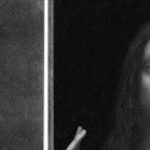
The attribution of the world’s most expensive painting – the $450 million Louvre Abu Dhabi Salvator Mundi – has collapsed under the combined weights of two scholars’ findings and the picture’s own artistic and art historical implausibility. Having disappeared immediately after its world-record sale at Christie’s, New York, in November 2017, this Leonardo-in-hiding is also mired in allegations of a joint involvement in the sale by presidents Trump and Putin. The toxic proximity of those two heads of state is a matter of intense national political concern in the United States where high-level official investigations are underway – as are a number of legal actions concerning auction house buyer/seller conflicts of interest. As those disputes play out, we consider the workings of today’s art historical and art market interface.
THE ART CRITICAL CONTEXT
In the 1990s we claimed common failures of connoisseurship in bad restorations and misattributions but thought the latter less serious because potentially correctable. That distinction is dissolving as increasingly many upgrading attributions are made on the back of “improving” restoration transformations. Generally speaking, connoisseurship shortcomings are evident in failures to detect outright fake old masters and in too-ready acceptances of elevated restoration-enhanced school works. Purpose-made fakes are closely related in their fabrications to the painted “recoveries” of supposedly original authentic appearances on stripped-down pictures. (See “A Restorer’s Aim – The fine line between retouching and forgery”.) The fakery of artificially distressed new paint and false painted craquelure is common to routine restorations; to restoration-assisted upgrades; and, to outright fakes. On the additional, extraordinary rise of the “painted-in” insinuation of computer-generated virtual reality into old master pictures, see “The New Relativisms and the Death of ‘Authenticity’” and Fig. 4 below.
Above, Fig. 2: Top row, the Metropolitan Museum’s Duccio Madonna and Child, as seen in 1904 and in 2004 (when sold for c. $50 million); above, the Leonardo Salvator Mundi as seen in c. 2005 and in 2017 (when sold for $450 million).
Above, Fig. 3: Top row, the present Louvre Abu Dhabi Salvator Mundi painting as seen in 1912 and when sold in November 2017. Bottom row: as at the same dates but showing some intermediary restoration states.
Attributions, like restorations, are made in socio-cultural contexts. Here, we examine the marketing of the upgraded Salvator Mundi with reference to the marketing of a picture that had received a spectacular upgrading a century earlier – the Metropolitan Museum’s 2004 acquisition of a tiny Duccio Madonna and Child. In both cases we see elevations of studio works that had first emerged at the beginning of the 20th century and were converted through restorations into claimed major autograph works. In both cases, when viewed dispassionately and art critically, the upgraded works are seen to stand anomalous within their allotted oeuvres. In both cases, the elevations thwarted the articulation of potentially more fruitful and better informed art historical narratives.
In studying the two cases we encounter errors of connoisseurship that rest on plain failures to look; failures to discern; and failures to make use of the sharpest art critical tool in the connoisseur’s tool box – the humble photo-comparison. This methodological abstemiousness can seem wilful and perverse as much as neglectful – some disavow photo-testimony outright as a critical tool. In the visual arts, and with today’s greatly enhanced photographic means of reproduction and transmission, there can no excuse for advocates’ declining to provide visual demonstrations of claims made in support of attributions or restorations.
THE PROBLEMS OF SCHOLARLY ADVOCACY ON THE MARKET
Where once a respected scholar might have proposed an attribution in an academic journal or forum in anticipation of critical responses, today, at the high end of the art market, teams of professional supporters are assembled one-by-one behind the scenes prior to some Big Media Announcement of a “discovered” masterpiece. Within such procedures, successive scholars’ invitations to appraise works are inescapably compromised by awareness of already committed supporters. At a certain point of accumulated critical mass it can be felt a) tempting to join and/or b) professionally unwise to dissent openly. A sense can grow that nothing will be permitted to count as evidence against that which has been collectively endorsed, and that any opposition will incur a risk of being dubbed a “hostile” party. At the low end, the trade euphemism for the many restoration-enhanced upgrades is “a sleeper”.
RECENT ARTWATCH WARNINGS AND ENGAGEMENTS
ArtWatch warnings on the Salvator Mundi’s Leonardo attribution: 1) On 11 November 2011 we pointed out (letter, the Times, Fig. 5 above) that the Salvator Mundi painting then on exhibition as a Leonardo at the National Gallery, and that is now the Louvre Abu Dhabi picture, lacked a sophisticated optical effect copied in 1650 by Wenceslaus Hollar from a painting then thought to be a Leonardo. 2) On 19 October 2017, nearly a month ahead of the 15 November sale of the Salvator Mundi at Christie’s, New York, we objected (in the Guardian) that the painting was inconsistent with Leonardo’s depictions of figures; that it lacked the sophisticated optical effects copied by Hollar; and, that there was insufficient evidence to support a Leonardo attribution. 3) On 14 November 2017, the day before the Salvator Mundi sale at Christie’s, New York, we warned that the provenances compiled by the National Gallery in 2011 and Christie’s in 2017 were unsupported, inflated and overly-reliant on then (and still) unpublished researches of one of the work’s first owners – see “Problems with the New York Leonardo Salvator Mundi Part I: Provenance and Presentation”.
CHRISTIE’S MARKETING OF A SALVATOR MUNDI AS A “MALE MONA LISA” AND AN EARLIER CASE
Above, top, Fig. 6: Left, Loïc Gouzer, co-chairman of Americas post-war and contemporary art at Christie’s stands next to “Untitled” by Jean-Michel Basquiat during a Christie’s, New York, press preview; right, the Salvator Mundi when sold as a Leonardo at Christie’s, New York, on 15 November 2017 – the last time it was publicly seen. (It is presently rumoured to be in a Freeport storage depot in Switzerland.)
Gouzer, who is leaving Christie’s, had claimed: “Young people look at Leonardo the same way they look at Basquiat.”
The day after Christie’s 15 November 2017 sale of the $450million Salvator Mundi, Thomas Campbell, former director of the Metropolitan Museum of Art, observed that the “eye-popping” price was no surprise in a market where “speculation, marketing and branding have displaced connoisseurship as the metrics of value”.
Todd Levin, an art adviser, told the New York Times: “This was a thumping epic triumph of branding and desire over connoisseurship and reality.” (See “How Salvator Mundi became the most expensive painting ever sold at auction”.)
George Goldner, former chairman of drawings and prints at the Metropolitan Museum, has said the allure of the Salvator Mundi “has nothing to do with art and everything to do with money,” and that “If you were to spend $450m on a rare car or diamond and put it on display, a lot of people would come to see it. If the Salvator Mundi had sold for $20m, nobody would go. Any painting that sells for $450m will attract crowds for a while. Then, all of a sudden, people won’t care anymore”.
THE METROPOLITAN MUSEUM DUCCIO MADONNA AND CHILD
Above, Fig. 7: Three views of the Metropolitan Museum’s Duccio Madonna and Child
Goldner is right of course – who queues now to see the Met’s famous “Duccio” (Fig. 7, above) which, like the Leonardo Salvator Mundi, emerged at the beginning of the 20th century with no history? The then recently restored Duccio had been launched by Berenson’s wife (Mary Logan) and a protégé (Frederick Mason Perkins) in 1904 at a time when Florence was “a factory of forgers”, according to Federico Zeri, and with modern wire nails embedded under its ancient and battered gilded gesso. By further coincidence, both pictures arrived at the beginning of this century after long absences (1949 to 2004 for the Met Duccio, 1958 to 2005 for what is now the Louvre Abu Dhabi Salvator Mundi-in-storage.)
In hindsight, the sale of the $50 million Duccio in 2004 served Christie’s as a model for that of the Salvator Mundi. The task in both cases was to market as an absolutely secure blue chip autograph old master, a work that had arrived very late in the historical day, without provenance, and from within a large group of related but artistically diverse pictures. Both works were successfully presented by Christie’s, on substantial expert authority, when, on a full art critical and documentary interrogation, neither can safely be so regarded.
Although we still cannot examine the Salvator Mundi’s unpublished technical literature, with the Duccio we can (thanks to earlier generous assistance from Keith Christiansen, the John Pope-Hennessy Chairman of European Paintings at the Met) examine that picture’s part-published technical literature and the under-reported means by which it had emerged from an antiques shop a century earlier and was, after restoration, instantly attributed to Duccio by its owner. As with the Salvator Mundi, there is no record of such a work having been produced by Duccio and no attempt has been made either to demonstrate that the Met picture was an original prototype for the many other versions of the type or to acknowledge the many historic variants themselves. Instead, five modern forgeries of the Berenson-upgraded Duccio are cited by Christiansen on grounds that they “testify to its prestige.”
THE MET DUCCIO CONTROVERSY LITERATURE:
The case for the Metropolitan Duccio has been put principally by Keith Christiansen in: the Fall 2005 Metropolitan Museum of Art Bulletin (“Recent acquisitions”, p. 15 – “among the most important single acquisitions of the last two decades”); an October 2007 Apollo article, “The Metropolitan’s Duccio” – which was described as “the first full account”; the Summer 2008 Metropolitan Museum of Art Bulletin – “Duccio and the Origins of Western Painting”; also in 2008, a special Met re-printed publication, Duccio and the Origins of Western Paintings.
The case against was put by Professor James Beck in the last chapter of his 2006 book From Duccio to Raphael – Connoisseurship in Crisis, and by Michael Daley who, after corresponding with Christiansen over the attribution, published three articles in the Jackdaw magazine between November 2008 and March 2009: “GOOD BUY DUCCIO?”; “BUYER BEWARE”; “TOXIC ATTRIBUTIONS?”
FURTHER SALVATOR MUNDI AND MET DUCCIO CONNECTIONS: MARKETING THE ATTRIBUTIONS
As with the Salvator Mundi, Christie’s marketed the painting as a “Last Chance to Buy a Duccio”. Christiansen is listed by Christie’s as one of the Salvator Mundi’s supporters, as also is the Met’s chief picture restorer, Michael Gallagher, and as was Christiansen’s predecessor as paintings’ chairman, the late Everett Fahy.
When purchased, the Met Duccio had never been technically analysed. This long out-of-sight work was only subjected to technical analysis by the Met after acquisition and after challenges to its authenticity had been made by Beck and other scholars. As with the Louvre Abu Dhabi Salvator Mundi, the subsequent technical examination reports were not published or made available to independent scholars.
GUSH, ACQUISITIONS, SUSCEPTIBLE VIEWERS, SYCOPHANCY AND ABSENCES OF “STYLE CRITICISM”
Like Robert Simon on the Salvator Mundi, Keith Christiansen is a life-long devotee of the artist in question. His accounts of the Met Duccio have inclined towards the rhapsodic while eschewing direct engagement with style criticism. He recalls being struck on his first (2004) encounter with the Duccio at Christie’s, London, that “Like a poem or a piece of music, a great work of art – even a very small one – it has the power to cast a spell over susceptible viewers, to draw them into the world of its creator. For a few moments we were silent, each of us registering our impressions… Ever since, almost forty years ago, I first stood before the Maestà in the Museo dell’Opera del Duomo in Siena, I have been haunted by Duccio’s singular gift for suggesting an ineffable, sacred presence in his depictions of the Virgin and Child, and it is this quality that first struck me – except that in this small picture there is an intimacy in the relation of mother to child that is quite different from what one finds in the artist’s public altarpieces, and the face of the Virgin is touched by a haunting melancholy even more poignant than I remembered from his larger public paintings…I knew the picture from old black and white photographs in books on Sienese painting and the two principle monographs on Duccio and his followers…There are few works of art I longed to see more than this small but astonishing picture…[which] would have been at the top of anyone’s wish list for acquisition…”
With big acquisitions museums take hyperbole and heroising gush to be in institutional order. The Met Duccio was by far the museum’s costliest ever and for a while it sparked an ecstatically uncritical hysteria. A New York restorer/dealer, Marco Grassi, for example, likened the picture’s emergence to the discovery of a manuscript score for a Mozart quartet. The world had earlier missed the chance to see it, he wrote (New Criterion, February 2005), because it was “on its way to London to be offered for sale, privately, through Christie’s.” But then, the happiest of endings:
“The Stoclet Duccio – we can now proudly call it ‘the Metropolitan Duccio’ – is an astonishing achievement…the artist places the Virgin at a slight angle to the viewer, behind a fictive parapet. She gazes away from the Child into the distance while He playfully grasps at Her veil. One must appreciate that every aspect of this composition represents a departure from pre-existing convention. With these subtle changes, Duccio consciously developed an image of sublime tenderness and poignant humanity, almost an echo of the spiritual renewal that St. Francis of Assissi had wrought only a few decades earlier…If, adding ‘strength to strength’ is a judicious policy in building collections, then, with the addition of the Duccio, its rewards will be particularly bountiful for the Metropolitan…And so, the Metropolitan’s recent arrival now rules supreme in this exalted company, and surely this could not have happened were it not for the outstanding quality of the museum’s curatorial resources. Chief Curator Everett Fahy and Associate Curator Keith Christiansen of the Department of European Paintings, in addition to Laurence Kanter, Curator of the Lehman Collection, constitute, together, a particularly prestigious concentration of scholarly expertise in the field in earlier Italian painting. No other museum can boast of a more distinguished team. One suspects that they, more forcefully and convincingly than anyone, made the case for the Metropolitan’s prodigious expenditure, and their advocacy merits our gratitude and applause…”
The celebration of “every aspect a departure” within an oeuvre is an inherently problematic and art-critically dangerous intoxication.
HOW A DREAM WISH MATERIALISED
Above, Fig. 8: Left, the Director of the Metropolitan Museum of Art, Philippe de Montebello contemplating the museum’s Duccio Madonna and Child (after its acquisition); centre, a fragment of an infra-red image of the painting, as published in Apollo in 2007; right, an x-ray of the framed Metropolitan Duccio panel, also as published in Apollo and showing the modern wire nails that no one had noticed or acknowledged.
Christiansen described how the Duccio picture was drawn to his attention in Danny Danziger’s (endlessly fascinating) 2007 Museum – Behind the Scenes at the Metropolitan Museum of Art:
“Nicholas Hall of Christie’s, with whom I have been friends for many years, phoned me up and said ‘I would like you to have lunch with me; there is something I’d like to show you.’ During the meal he slipped me a transparency, and I looked at it. It was a painting that had not been seen by any of the major Duccio specialists for fifty years…”
What could possibly go wrong? Nothing, Christiansen clearly thought: “…it had been in the Stoclet family and out of circulation. ‘Fantastic, how about the price? I asked. He told me. OK, I said, ‘I will deal with that later.’ And then we finished lunch.” Note, re frequently disparaging art world dismissals of photo-testimony, first, a curator had committed to the cause of a work he had never seen on sight of a single photograph; second, the Met’s director, Philippe de Montebello, would also become hooked on the painting through that photograph; third, that for over half a century, professionally-speaking, the picture’s Berenson-made attribution had been sustained on photo-testimony alone. Christiansen would later put it like this: “In 1949, [the then owner of the Duccio, the financier Adolfe] Stoclet and his wife died within a short time of each other. The collection was divided among their children, but access to it was increasingly difficult and there was even uncertainty as to whether the Duccio had been sold. The result was that a generation of scholars had to formulate their opinions on the basis of photographs, of which, fortunately, extremely good ones had long been available.”
THE CIRCUMSTANCES CONCERNING THE WITHDRAWAL FROM THE 2003 SIENA EXHIBITION
In Calvin Tomkins’ 11 July 2005 New Yorker article “The Missing Madonna”, it is said that the Met’s then head of European paintings, the late Everett Fahy, visited the Stoclets’ house in Brussels in 2002 to negotiate with of one the relatives for the Duccio’s loan (later rescinded) to the 2003 exhibition in Siena. Fahy may possibly have been the first scholar to see the painting in over fifty years. Tomkins reports Fahy saying that the picture “still hung then where it had always had, in Adolphe Stoclet’s private studio”. Christiansen later reported (Apollo 2007) that “Stoclet did not hang his gold ground pictures in this modern [Josef Hoffmann-designed house] setting but kept them in a large cupboard, taking them out, one by one, on Sunday afternoons or on the occasion of a visit of a guest such as Berenson.” Kenneth Clark had been the source of the cupboard storage claim. Fahy noted, “Everything the Stoclets collected was something you could put in your hand, small and precious”. Small, but not always precious. As Frances Vieta established (and Beck acknowledged in his 2006 connoisseurship book), Stoclet had owned two little Duccios, one of which proved to be a modern forgery in 1989. It, too, had been attributed to Duccio by Berenson’s protégé, Frederick Mason Perkins, who, along with Berenson’s wife, Mary Logan, had also upgraded the Met Duccio Madonna and Child, and two hugely expensive sculptures bought by Helen Frick that were also subsequently exposed as modern forgeries. Berenson himself had been taken in by half a dozen or so modern forgeries. The Cleveland Museum had been taken, too, but recovered when it identified modern wire nails and paints in a “Sano di Pietro” and declared it a fake. Before the Met picture had been first upgraded to Duccio by its owner, some had thought it a Sano di Pietro. The Cleveland Museum downgraded another Sano di Pietro to a school work when it – like the Met picture – was found to contain azurite not ultramarine. “With attributions”, Fahy held, “it’s not the number of people who agree with you, it’s the quality of their judgments.” The Louvre Abu Dhabi Salvator Mundi had, reportedly, been unsuccessfully offered to Christie’s in 2005.
The Met picture, having narrowly missed a public viewing in the 2003 Siena exhibition for Duccio and his followers, suffered further non-visibility when Christie’s put the newly-emerged work into a private sale among just three major museums: the dollar-rich Getty Museum, which had balked at the asking price; the Louvre, which was said to be working on getting the money for the (then and still not-disclosed) asking price; and the Metropolitan Museum. Under this private sale arrangement it is possible that barely more than a dozen experts had seen the painting before it was sold to the Met and thereafter was trumpeted as an unquestionably autograph seminal and revolutionary work in the history of Western painting – and all this, as mentioned, ahead of a technical examination. The avoidance of public scrutiny during the sale seems to have occurred by design, not accident. Calvin Tomkins, whose New Yorker disclosures have not, so far as we know, been challenged, added:
“Although the ‘Madonna and Child’ was well-known in art-historical circles as the only one of Duccio’s dozen or so surviving paintings to remain in private hands, its whereabouts had been uncertain since the death, in 1949, of its last registered owner, the Belgian collector Adolphe Stoclet. In fact the picture never left the Stoclet House in Brussels. Stoclet and his wife… had willed the house to their son, Jacques, whose widow held onto it until her death in 2001. Soon after that, her heirs, (four daughters) who are very high on anonymity, agreed to lend it to an important exhibition in Siena, Duccio and his school…a few weeks before the opening in 2003, the painting was withdrawn. This coincided with rumours of an impending sale, which turned out to be true.
“Although everyone involved in the transaction is bound by omertà, it is known that both Sotheby’s and Christie’s, the principal auction houses, engaged in lengthy and fiercely competitive negotiations with the heirs, and Christie’s eventually won the prize. ‘The family was very keen that the painting go to a public museum or institution,’ according to Nicholas Hall, international director of Christie’s Old Masters department. This was one reason that the family decided upon a private ‘treaty’ sale, in which the auction house and the seller determine the price and then offer the work to selected potential buyers, rather than letting it take its chances at public auction; another reason was that a private sale is more private. ‘We got it by putting a significantly higher valuation on the painting than anyone else – by multiples – based on its being the last Duccio in private hands and its being so impeccably preserved,’ Hall told me. Hall himself never met the sellers. ‘The contract document must have been four inches thick, and it was the most rigidly controlled transaction I’ve ever been involved in,’ he said…”
CHRISTIE’S LAVISH PRESENTATION LITERATURE
Tomkins reported that, in addition to the transparency, Nicholas Hall had given Christiansen the “lavish presentation booklet that Christie’s had prepared for prospective buyers”. On whose imprimatur or on what scholarly authority had that booklet been prepared? How many people got to see it? When Christie’s auctioned the Salvator Mundi, the publicly-disseminated provenance was frankly acknowledged to have derived from the National Gallery’s 2011 catalogue entry; the restorer’s 2012 report; and, through their declared joint indebtedness, to the (still today) unpublished researches of one of the original 2005-2012 consortium of dealer/owners.
A COURTIER FLATTERS?
When Christiansen left his lunch with his old friend at Christies, he wondered what to do next about the tiny work he considered “probably the most important early Italian picture that could ever come on the market”. Should he call his director who was on vacation in Canada? He decided to wait: “and then I went into his office and said, ‘I am duty bound to show you this,’ and then I showed him the transparency. I casually said to him, ‘You know, Philippe, you deserve this picture. Tom Hoving had his [1970 $5.5 million Velazquez] Juan de Pareja, Rorimer had his Rembrandt [“Aristotle Contemplating the Bust of Homer” for $2.3 million in 1961]; I don’t see why you shouldn’t have this towards the end of your career’.”
Christiansen continued (to Danziger): “My director fortunately is a person who loves old master paintings, who grew up with old master paintings and worked as a curator in this department and does not need to be told much. He was completely riveted by it. He asked me the price while he kept looking at it, and then he said, ‘I don’t see how we can get it…’ But that, I imagine, was also when the wheels began to turn in his head, because when I left, I thought there was a real possibility.” In the heady post-acquisition days of November 2004 Christiansen recalled to Carol Vogel in the New York Times that when the director was first shown the photograph “it took him about 30 seconds to say ‘We really have to have this’”.
At the same time, Tomkins had made clear why de Montebello might have gagged on the price. The Getty Museum (which has been bitten by fakes) had already turned it down: “reportedly, because of the price. This struck Christiansen as ironic because the price was so clearly predicated on the fifty-five million dollars that the Getty had agreed to pay, two years earlier, for Raphael’s small, perfectly preserved Madonna of the Pinks.” That little Raphael in the mint of condition had, like the even littler Met Duccio, lost its original back when, for some reason it was polished by its artist/restorer/dealer/smuggler owners. When the cradle was removed from the back of the by-then Met Duccio, it was found to have been scraped down to the bare wood, on which was written an ascription to…a member of Duccio’s school. Like the Salvator Mundi, the little Raphael was one of many versions of the subject – there are over fifty-five Madonna of the Pinks. James Beck remarked in his 2006 connoisseurship book: “I find it appropriate to claim, given the situation as has already been sketched, there is no chance whatever that the Northumberland painting is an original Raphael.” But for sure, within a couple of weeks of seeing the photograph, de Montebello, Christiansen and the Met’s chief restorer, Dorothy Mahon, flew to London to see the Madonna and Child armed with a magnifier and a UVF lamp to spot retouches.
BUY FIRST LOOK AFTERWARDS
The next morning, after a couple of hours of inspection at Christie’s in London with Christiansen and Mahon, de Montebello made a quick and high offer (without Board authorisation). It was immediately accepted by Christie’s but under the terms of this “private treaty sale” the picture could not be removed from Christie’s to undergo examinations at the Met and be presented to the Board’s Acquisitions Committee for appraisal and possible approval, as was customary. This was because, as Christiansen put it, “the picture wasn’t leaving Christie’s until the whole deal was finished”. Why so – and why accepted by the Met when such a huge sum was at stake? Had this condition been stipulated by owners who seemingly had developed cold feet about the picture being seen for the first time in over half a century in the context of a show on Duccio and his followers?
In his 1993 memoir Making the Mummies Dance Thomas Hoving recalled that when he went to Christie’s in London in 1970 (with the then head of restoration, Hubert von Sonnenberg, Everett Fahy, and a Board member, Ted Rousseau), the chairman of the auction house, Sir Peter Chance – “the very symbol of upper-class culture neatly folded around commerce” – explained “The condition’s perfect…the picture will not be cleaned up for the sale. Lord Radnor forbids it. He is also against anyone…examining it…scientifically. But no matter, we all matriculated into connoisseurs without all these fashionable instruments, if I may say so, Dr. von Sonnenberg.” (Hoving was bemused when Sir Peter put the price at “approaching the two million guinea mark” – a guinea being a pound, plus a shilling: “While Sotheby’s always conducted their sales in pounds, Christie’s favoured the more pretentious guinea.” In those days the joke was that at Christie’s gentlemen pretended to be salesmen while at Sotheby’s salesmen pretended to be gentlemen. In today’s globalised ownership-fluxing art world it might prove impossible to slide a cigarette paper between them.)
That Velazquez painting truly was one of the greatest portraits ever to come to market – and, in some part it was so because it had probably not been touched in a century and a half. When the Met staffers revisited the next day, von Sonnenberg held the picture against the window when the guard left the room and discovered that it had never been lined – hence the extraordinary vigour and sparkle of the brush work. As soon as Hoving and von Sonnenberg took possession it was sent secretly to Wildenstein’s – not to the Met itself – and there it went straight under the conservation chemical cosh on a claim of dirty varnish-removal but, in reality, in conformity with the museum’s imperious proprietary and aesthetic imperatives. (See “Discovered Predictions: Secrecy and Unaccountability at the Metropolitan Museum of Art, New York” and “Why is the Metropolitan Museum of Art afraid of public disclosures on its picture restorers’ cleaning materials?”) Even before it might become “The Metropolitan Velazquez” the portrait became a Met-treated painting and no one else at the museum, let alone its paying public, ever got to see the great masterpiece in its unadulterated state. To his credit Rorimer had earlier confessed (privately) to Alexander Eliot that the Met’s restorers had ruined its Rembrandts – and those poor paintings were not alone:
Above, Figs. 9 and 10: Details of the Met’s Goya portrait of the young Manuel Osorio Manrique de Zuñiga who died before he was eight years old. As seen before cleaning (left) and after cleaning (right).
In July 2005 Philippe de Montebello explained to Calvin Tomkins (New Yorker): “It’s the single most important purchase during my twenty-eight years as director – It’s my ‘Juan de Pareja’, it’s my ‘Aristotle.’” De Montebello later explained in the Summer 2008 Met Bulletin that he had moved so fast on an unexamined work because he felt authorised by:
“the assurance that comes from the trust I have learned to place in the curators and conservators of this great institution…As I held the picture in my hands, enraptured by its wonderful quality…I was treated all the while to Keith’s impassioned scholarship…it was particularly Keith’s precise and learned assessment of the picture that allowed me to consider the acquisition an imperative.”
(For a fuller account of de Montebello’s decision to buy, see CODA below.)
Immediately after spending nearly $50million on the unexamined Duccio at Christie’s in London, Christiansen, de Montebello and Mahon went to see the National Gallery’s Duccio triptych The Virgin and Child with Saints. Christiansen recalled (as reported in Danziger, 2007): “After about two hours at Christie’s we all walked down to the National Gallery where they have a very rare and beautiful Duccio triptych, which is simply marvellous – a touchstone of Duccio’s work – and we all felt that ‘ours’ was every bit as fine and in certain respects, more intimate and direct.” The following year, in a foreword to the 2008 Summer Met. Bulletin Christiansen elaborated:
“…we decided to walk the few blocks to the National Gallery, which owns a portable triptych by Duccio that has long been a cornerstone of its superb collection of early Italian paintings. The triptych is a work of extraordinary beauty and impeccable craftsmanship. Duccio struck a slightly different key than in the picture we had been examining, placing greater emphasis on the regal bearing of the Virgin. The motif of the Child playing with his mother’s veil is further developed, so that Christ unfurls a rich cascade of folds. But these enhancements came at the expense of the simple dignity and touching humanity of the small panel we had seen at Christie’s. In short, we felt that we had before us the opportunity of acquiring a painting that was on a par with one of Duccio’s most admired and best-preserved works, a painting that represented the artist at the very height of his powers.”
Michael Daley, Director, 6 February 2019
In Part II we consider why the Met team might have been advised to view the National Gallery Duccio triptych (and its dossiers) before visiting Christie’s and buying on the spot.
CODA:
Martin Gayford accompanied Philippe de Montebello on a walk around the Metropolitan Museum, as recorded in his 2014 book RENDEZ-VOUS WITH ART. In his chapter “The Case of the Duccio Madonna”, Gayford wrote: “We ended up sitting on a bench near perhaps Philippe’s most celebrated acquisition: a small exquisite Madonna and Child by the 14th century Sienese master, Duccio. It remains the most expensive single object ever purchased by the museum. So how, I asked, did he make the momentous decision to buy it?” De Montebello replied:
“When the Duccio was on offer, I had, as Director, to decide whether the picture was worth the huge sum I would have to raise to acquire it. To arrive at this decision, I had to wear several hats all at once: one of these was that of an informed art lover, the French ‘amateur’, and in that role focus on the seductive and lyrical lines, the harmony of the colours, the felicitous choreography of the hands and feet, the wonder of the human contact coincident with a certain respectful detachment in the depiction of figures, that are, after all divine. I also had to don my art historian’s hat and note that this Duccio was one of the very first pictures that mark the transition from medieval to Renaissance image making. It represented a key moment, a break from hieratic Byzantine models to a more gentle humanity.
“To be more specific, and it is more than just a recondite detail, look at how the parapet at the bottom connects the fictive, sacred world of the painting with temporal one of the viewer. This important observation – among others – was made by the curator Keith Christiansen as we were examining the picture in London. This led him to conclude that Duccio must have seen the Giotto frescoes in Assisi depicting the life of St. Fancis, where the illusionistic framework, including the parapet, relates the narrative scenes to the architecture of the church.
But Martin, you want to know the truth? All those considerations were largely irrelevant when the time came to decide whether to spend in the region of $45 million on the work. For this, I needed my museum director’s hat. The quantitative assessment had to be based on different criteria. First and foremost were the old-fashioned notions of quality, craft and skill. Did the work sing? Did it stop me in my tracks and did it then hold my attention? Was I reluctant to turn away from it too quickly?
“However, in my mind, the question of relative importance and quality was always pushing itself forward. That the work was beautiful and admirably well painted was not enough. It needed also to be very important, exceptional in every way, and extremely rare. If there had been three or four others similar to this one it would have meant that this picture should command a lower price.
“Then there was the question of what the price of this panel should be in comparison with one of the missing predella panels from Duccio’s Maestà in Siena were it to come up for sale. This is because the Madonna was and is a self-contained, independent and devotional image; it doesn’t belong to a larger work, the wholeness of it is part of its beauty and impact. The entire story is there in that one painting. That, too, added to its value.
“Then, as curators, we also needed to be concerned with the physicality of the work. After all, this object, which can be held in the hand, has weight and a certain thickness, and is vulnerable to the vagaries of time. Part of what drove me to buy the Duccio was the fact that for close to an hour I did hold it in my hands, that I did turn it around, looking at the back, sensing its weight, measuring its thickness. It had a corporeal reality that was almost, to use a paradox, mystical.
“No longer bound by image alone, as one would be when looking at a photograph – or even from a distance – I then focussed on the deep burn marks at the bottom of the frame, obviously made by votive candles, confirming that this was indeed a devotional picture. Just a few additional details resulted from close examination, not the least of which was that the picture was in impeccable condition, a rare thing when it comes to Trecento gold ground pictures, as most works have suffered greatly over time, mostly I’m afraid at the hands of restorers.
If you are a student of art, just think of the Jarves collection at Yale, where many of the pictures, early renaissance works, are now a near total ruin. We were also able to confirm that this was indeed not an incomplete work, a wing of a Diptych for example, there is a hole at the top indicating that the picture was hung from a hook.
“Then, of course, came the issues of the provenance or ownership history, an important preoccupation of art historians, for what it may reveal about the work. While it obviously began life as a devotional picture, made for an unknown patron, it eventually ended up in the hands of two major European collectors: Count Grigory Stroganoff at the end of the 19th century, and later the Belgian financier Adolphe Stoclet, in his Brussels house, which is a masterpiece of the Wiener Werkstätte. Also, the Duccio had been lent to the great Sienese exhibition of 1904 where it was highly praised; indeed one art historian Mary Logan (Bernard Berenson’s wife), deemed it the single finest work in the exhibition.
In addition, and not a minor factor in gauging the price, was the knowledge that there would most probably never be another Duccio for sale, as this was the only work of his known to exist outside of a museum. I also knew – which is why I made a quick and high offer – that the Louvre, the other major museum that did not have a Duccio, was after it as well and was going to make a real effort to buy it.
“So some competitive nerve was struck, and thus the need for pre-emptive action. While it may not have been conscious, I think that there is no question that a part of me wanted my institution to own that Duccio – over and above its importance to the proper representation of the development of Sienese art in the Trecento – simply to have it as yet another major work that would confirm the stature of the Met.
“At this point, the sum of all the above, which occurred in a rush of sensory and intellectual responses, led to an important psychological factor, which should not be underestimated in such cases: it is that of the curator/acquisitor experiencing what is a quasi-libidinal charge (you might even call it lust, albeit of a high order); the irrepressible need to win; to have taken the object of desire. You can’t get away from that. We are all human beings. Institutions are not just made of stone, glass and steel, they are run by people. It is absurd to try to maintain and project total objectivity.
“As a result of all these considerations, these thoughts, observations, calculations and feelings, as well as the confidence I gained from learned colleagues, the Met boasts this masterpiece of Trecento painting, while the Louvre, with its outstanding collection of Italian paintings, is still, and may forever be, lacking a Duccio. This actually saddens me, and I hope that a fine Duccio does turn up someday, from somewhere, and they can get it.”
Connoisseurship: Examinations, Debates and Snap Visual Responses

The rising tide of old master “sleepers” and “discoveries” carries great dangers and demands snap judgements. Some candidates for upgrades intrigue, some look dubious, some scream “Fake!” Last week two cases caught our eye.
Fig. 1, above. Fig. 2, below. The newly discovered “Lost” Van Gogh sketchbook (above, top) rang our and many other fake bells. Then came a report that a small “Florentine School” painting on a €3-4k estimate fetched €375k at auction as a sleeping Filippino Lippi (above, Fig. 1). A link to another small work attributed to the artist at the North Carolina Museum of Art (Fig. 2, below) showed pronounced, seemingly reassuring correspondences, but something jarred.
On connoisseurship we hold that every claimant work should be rigorously “interrogated” in three crucial respects. Technically, in its physical composition; by documentation on its known or claimed histories (provenance); and, above all, by visual analysis because, in the visual arts, every picture is its own prime historical document and its inbuilt historically-generated artistic relationships constitute the primary subject of art critical appraisal and evaluation.
Failure to excise bad attributions deceives the public and corrupts oeuvres. A good picture has nothing to fear from challenges. No amount of scrutiny constitutes a threat as good pictures outlive their doubters and can fight another day. Argument is healthy and a successfully repulsed challenge can increase understanding and enhance a good picture’s lustre.
Vincent van Gogh: The Lost Arles Sketchbook
Above, Fig. 3. The controversial lost-but-now-found Van Gogh sketch book above is by Professor Bogomila Welsh-Ovcharov, a Van Gogh authority whose claims of authenticity are supported by Ronald Pickvance, author of Van Gogh in Arles, but the cover’s supposed Van Gogh ink self-portrait announces itself as a draughtsman’s pastiche, as Mark Hudson noted in the Daily Telegraph (“A romantic story but can it really live up to its promise?”, 16 November 2016).
Above, Fig. 4. Simply by placing the supposed Van Gogh self-portrait next to an autograph portrait, immense and glaring differences become apparent: the author of the “discovered” drawing has abandoned symmetry with eyes of radically different sizes and a nose that seems product of a car crash. Throughout, the author mimics Van Gogh’s pen marks without comprehension of his form, power of design, and psychological acuity.
Above, Fig. 5. Instead of a form-camouflaging jumble of marks, the bona fide Van Gogh disports five graphically discrete component parts: a light-coloured jacket; a dark shirt and scarf; a varied but, on aggregate, mid-toned face; a light-toned hat with some mid and dark-toned form articulating shading; and, throwing all other values into relief, an agitated but tonally cohering background. Each of these spheres is allotted its own graphically purposive notations. The four images we show above for comparison are easily found online in historically successive reproductions. While these reproductions vary considerably, the force and artistic coherence of Van Gogh’s graphic intent and method shines through all.
Above, Fig. 6. If we place the bona fide Van Gogh between the clumsy mimicking newcomer and a masterpiece of the greatest graphic brilliance – van Dyck’s etched self-portrait – it is clear that the Van Gogh has more kinship with the latter than with the former.
Above, Fig. 7. And if we compare the Van Gogh with an entirely autograph van Dyck etched state of a figure we find a common use of a toned background that throws both subjects’ flickeringly brilliant lights and darks into relief.
The Van Gogh Museum’s objections to the “Lost Arles Sketchbook” and its track record on Van Gogh attributions
Above, Fig. 8. Prof. Welsh-Ovcharov (top) has responded to the Van Gogh Museum’s dismissal of the drawings with a rebuttal and a challenge to debate – thereby showing conviction and good faith. Her publisher reportedly characterises the proposed debate as “an opportunity to shed light on the conditions under which the Van Gogh Museum is claiming the de facto right to a monopoly of attribution.” This is a common plaint against authorities that block would-be, high-value attributions but our impression of the museum’s judgements is favourable.
In 2006 a Van Gogh – The “Head of a Man” owned by the National Gallery of Victoria in Australia (above left, on an easel) – was challenged by the art historian and Sunday Times art critic Frank Whitford when the portrait was loaned to an exhibition in Edinburgh. The newspaper asked our opinion and, when we demurred, sent a (revelatory) high resolution full colour compilation of all of Van Gogh’s painted portraits. We supported Whitford, saying to the newspaper (as reported in ArtWatch UK Journal, Spring 2008):
“The specific warning signs that should have alerted the buyer are:
“1] It is unique in Van Gogh’s portrait oeuvre
“2] It does not fit in the stylistic chronology that exists within that oeuvre. Compare it for example with the brushwork, colours and ‘attack’ of the Old Man with Beard, painted the year before that is in the Van Gogh Museum, and the Portrait of Camille Roulin painted a year or so later and that is also in the museum. There is an enormous but clear and logical development between those two pictures, from thick, laboured, relatively coarse brushwork to much more refined and ‘decorative’ marks – but both are entirely consistent and ‘all-over’ in their treatment.
“3] If its provenance goes back no further than Germany in the late 20s or early 30s, that is particularly unfortunate. Germany at the time was notorious for the certification by scholars (for a fee or sales cut) of dud works. The dealer René Gimpel has referred to the scandalous ‘amounts obtained by means of certificates given daily by German experts to German dealers. Just as there were paper marks, so there are paper canvases, an easy way of bringing dollars into Germany…The German title of Doktor impresses the Americans. The museums are even more intent than the collectors on defending their fakes or their mistaken attributions….’ By coincidence, in the current ArtWatch Journal [No 21], Kasia Pisarek cites the case of the great Rubens scholar Ludwig Burchard who issued so many optimistic certificates that he was unable ever to write his definitive book on the artist…She has identified over 60 Burchard attributions that have subsequently fallen. It was Burchard who first upgraded to Rubens the Samson and Delilah that is now in the National Gallery.
“I would add that the fact that it seems to be admitted that it is a cut-down canvas that was glued onto a panel compounds suspicions… Why should a (presumably) then only forty years old canvas, have needed gluing onto a secondary support? It might be worth asking the Gallery curators if any scholar has questioned the picture publicly or privately.
“It may be coincidence, but two of the pictures that ArtWatch has challenged in our own National Gallery, the Rubens Samson and Delilah and the Raphael Madonna of the Pinks, no longer retain their original backs. The former was planed down to 2 or 3mm thickness and glued onto a sheet of blockboard; with the latter, the family of restorers who sold the picture in the 19th century had (most unusually) polished the back of the panel thereby removing all historical evidence.”
As we have seen more recently, the claimed lost Leonardo drawing “La Bella Principessa” that emerged anonymously in 1998 had been glued to an old oak panel. Gluing canvases or drawings onto boards conceals half the material evidence. On 3 August 2007 Andrew Bolt reported in the Australian Herald Sun:
“The curious thing about the National Gallery of Victoria’s fake van Gogh is how easily it was spotted as phoney once it went on tour…. For more than 60 years this painting hung in the NGV without anyone screaming ‘Fake!’ True, a few experts now say they had their doubts, but it was only when the NGV proudly loaned its ‘van Gogh’ to Scotland’s Dean Gallery last year that the painting was denounced. Three British critics took one look at it and snorted… Even then, there were some back in Melbourne who couldn’t accept the evidence of their own eyes, as ABC Television’s 7.30 Report found:
“‘Two of the critics include Michael Daley from ArtWatch UK and Times art critic Frank Whitford. But Robyn Sloggett [an art authentication expert at Melbourne University] has questioned their expertise. ROBYN SLOGGETT: I don’t think either of them are Van Gogh experts, certainly not known to be such…[Director of the National Gallery of Victoria] DR GERARD VAUGHAN: It is a slightly offbeat picture. It doesn’t fit into the natural progression of Van Gogh’s work at that time because it was a moment in late ’86 and into early 1887 where he was experimenting with two or three different styles. In many ways, this is slipping back into his earlier realist style of the mid 1880s where he concentrates and uses these earthier ochre colours. It is a transitional picture.’”
“Conceived at special moments” and “sometimes repeating, sometimes anticipating themselves” are commonplace apologias for disqualifying incongruities in upgrades. In 1997 and 2000 the National Gallery claimed its Rubens Samson and Delilah did not look like any other Rubens in the gallery because it was “the only work in this collection typical of the artist when he had returned from Italy in 1608”. In truth the painting was unlike the (secure) one that immediately preceded it and unlike the (secure) one that immediately followed. If a Rubens, it would be the only one on which he employed flat brushes and painted finger tips with rectangular highlights. During ABC Television’s 7 August 2006 programme (“NGV’s Van Gogh Labelled a fake”), James Mollison, a former NGV director said: “This picture has been doubted by people very often.”
The upshot of the controversy was that the NGV director announced that such was the gallery’s confidence that the painting would be submitted (voluntarily) to full technical examination at the Van Gogh Museum. A year later the Herald Sun reported the attribution’s demise at the Van Gogh Museum:
“The Dutch team used X-radiograph, digital photographs, light microscopy and paint and thread analysis. Among conclusions were: THE work’s ground layer of white paint is not found in Van Gogh’s Antwerp and Paris works. ITS use of pure ochre is not found in other Van Gogh work. THE portrait shows just the top of the man’s shoulders. Van Gogh usually showed more of the clothes. “A COMBINATION of a fairly coarse and detailed painting style”, with more detail in the mouth, eyes, skin and beard than Van Gogh used. NO reference to the portrait or the sitter in Van Gogh’s extensive letters. The experts also noted no record of the work could be found before 1928, when it appeared at Berlin’s Galerie Goldschmidt and Co.”
The Rubens Samson and Delilah emerged in Germany the following year at Van Diemen and Benedict where it was offered as a Honthorst before being upgraded by Ludwig Burchard. Previously it had been attributed to Jan van den Hoecke, a follower of Rubens. Burchard had recently upgraded the supposed Rubens ink sketch design for the Samson and Delilah (see Art’s Toxic Assets and a Crisis of Connoisseurship ~ Part II: Paper – sometimes photographic – Fakes and the Demise of the Educated Eye ).
The Newly Upgraded Filippino Lippi
Above, Fig. 9. At first glance the awakened “Filippino Lippi” (above right) seems more plausible than the new Van Gogh drawings – especially when linked to a work attributed to the painter at the North Carolina Museum of Art (above left). In terms of palette, condition and design the two seem as peas in a pod but this closely related pair triggers no recollections of anything similar in the artist’s oeuvre. If their strikingly common format suggests original incorporation in a larger work, disjunctive variations in their parapet walls and stone inscription tablets dispels the possibility. Most inexplicably of all, the new upgrade is incongruously modernist in its emphatic planar and ‘on-the-picture-surface’ geometrical vocabulary.
Above, Fig. 10. In 1901 the painting of Saints Uraldus and Fridianus was sold (not as a Philippino Lippi but as a Masaccio) to an English aristocrat, the Earl of Ashburnham. As with the recently proposed Haddo House Raphael (Fig. 10 above), there is little on the panel’s back other than a label in English for an exhibition of “Early Italian Art” (Fig. 10 top). For the Carolina Saint Donatus, the museum offers only a date – “circa 1490” – and the identity of the picture’s donor, the Samuel H. Kress Foundation. Such lacunae are perplexing because Filippino Lippi is a well-chronicled artist whose securely attributed works might easily be brought into direct comparison with the two more recent attributions.
Above, Fig. 11. The backs of attribution upgrades often prove problematic, and none was more so than the small panel “discovered” as a Duccio Madonna and Child (above right) in 1904 after having been bought in an antiques shop in Italy. It was then rarely seen until bought with fanfare (but no technical examinations) for $50m in 2004 by the Metropolitan Museum of Art, New York, in a blind “treaty” sale conducted by an auction house among a few leading museums shortly after the picture was withdrawn from an imminent comparative exhibition of Duccio and his followers that would have introduced the painting to many scholars for the first time and in an instructive context. That withdrawal – despite the painting’s inclusion in the catalogue – might have been made out of fear of repeating the demise of the owners’ second Duccio, as described below.
The back of the tiny picture had been cradled with no fewer than eight mahogany bars and when these were later removed at the Met. a hand-written ascription to Duccio’s pupil “Segna” was found on the bare poplar wood from which painted work had been stripped. The Met Duccio contained modern wire nails, a fact not acknowledged in the museum’s post-purchase technical examination reports. When we asked after the antiquity of the nails the museum claimed they had been inserted as repairs after the panel had been cradled in the 1930s. As “proof” of that unsupported chronology it was said that one of the nails had entered one of the mahogany bars. However, as we pointed out, the head of that particular nail had been visible on the front of the frame throughout all of picture’s photographically recorded history and, while some nail heads were visible most were not and therefore had been applied before the (now heavily distressed) frame was gessoed and gilded. Thus, the panel arrived in the world at the beginning of the 20th century with modern nails intersecting a cradle that concealed an awkward ascription on a stripped-down back.
Above, Fig 12. A face painted in the 14th century by a follower of Duccio (identified by Pèleo Bacci as Segna) is shown above to the right of the face of the Met’s Duccio as it was before restorations established the blue of the Virgin’s mantle to be azurite, not the requisite ultramarine. No one ever suggested that the painting on the right was by Duccio and no one judged the Met’s picture an autograph Duccio before Bernard Berenson’s wife (Mary) in 1904 with the support of Berenson’s protégé Frederic Mason Perkins. An earlier suggestion had been that it was a work of Sano di Pietro, as Frances Vieta discovered in researches at the Frick Library, New York, that were kindly made available to us.
In 1933 Perkins attributed a second Madonna and Child to Duccio and persuaded the then owner of the Met.’s Ducio (the Belgian collector, Adolphe Stoclet) to buy it. In 1989 that Duccio was loaned to the Cleveland Museum of Art and was there identified on technical examination by Gianni Mazzoni as a fake by Icilio Federico Joni who ran a forgery factory fronted by middlemen, one of whom was Berenson’s protégé Frederic Mason Perkins.
Above, Fig. 13. A cult of Supreme Art Historical Importance was activated around the Met. Duccio and part of this mythology rested on the picture’s supposedly miraculously well-preserved, little-restored, condition. Comparison of the photographs above showing its present state (right) and an earlier state (left) discloses how extensively the work has been repainted – note the altered design of the dominant eye, and the extensive reworking of the veil. The potentially falsifying nature of restorations when determining attributions remains a conspicuously under-examined area – as does the extent and nature of repainting on stripped-down “sleepers”. (But see “A restorer’s aim – The fine line between retouching and forgery”. For a fuller account of the Met.’s Duccio difficulties, see Michael Daley: “Buyer Beware”; “Good Buy Duccio?” and “Toxic Attributions?” in the Jackdaw magazine issues of Nov/Dec. 2008, Jan/Feb. 2009, and March/April 2009.)
The Newly Upgraded Filippino Lippi (continued)
Above, Fig. 14. With the two small “Filippino Lippi” pictures at Fig. 9 and below, top, said to have been painted between 1490 to 1494, precise stylistic comparisons can be made with securely attributed works in the oeuvre. What is believed to be Filippino Lippi’s self-portrait above was executed by the artist in 1481-1482 in the Brancacci Chapel, Santa Maria del Carmine, Florence.
Above, Fig. 15. Filippino Lippi’s Apparition of the Virgin to St Bernard of 1480-86 was said by Bernard Berenson (in his 1938 revised Drawings of the Florentine Painters) to comprise “Filippino’s masterpiece, the last picture in which he is still a pure Quattrocentist, in which there is no sense of the Baroque.” Is it conceivable that some years later this artist painted the two small pictures shown here above the Apparition? Berenson reports that Filippino went on to betray excesses, not to purge and severely abstract his pictorial vocabulary: “Filippino’s Baroque, however had little in common with the qualities of the genuine [Baroque] style, and much with its worst vices. These were the sins of extravagance, of wantonness – the vulgarity of the newly enriched, who feel life is enhanced by the mere act of showy spending.”
Above, Fig. 16. At the top we see how Filippino Lippi painted books before 1486 in his Apparition of the Virgin to St Bernard and before his lapse into Baroque excesses. In this secure work we not only see great technical accomplishment but a fascination with the very means by which books were stitched together in assembled folded sections. Is it conceivable that after this tour de force celebration of the book binder’s craft skills Filippino should have been satisfied with the out-of-perspective simplifications of books in the Saint Uraldus? While the opened book has been painted in utter ignorance of book binding methods, the ochre coloured book at the bottom left of the pile has managed to anticipate to a remarkable degree the appearance of a neat modern machine-bound book.
Above, Fig. 17. Again, does the chasm of technique and sophistication in this further comparison from the Apparition and the Saint Uraldus not strain credulity at claims of a common author?
Above, Fig. 18. By 1493-94 the artist had completed his Madonna and Child with St Catherine of Alexandria and St Martin of Tours as above and we see precisely the over-elaboration Berenson castigated as Filippino’s squandering “like a nabob with a heady disorderliness all the decorative motives which the heritage of antiquity, the hard earnings of his precursors, and his own fancy had put into his hands.”
Above, Fig. 19. How conceivable is it that Filippino might, at the same short period, have made two so diverse treatments of a man parting drapery with an advancing left arm as in these two paintings? In the one the “Blanket-like drapery dear to Filippino” (in Berenson’s term), curves, twists and folds naturally across the body, while in the other it moves as if fabricated by a former sheet metal worker with little regard for any underlying body, or even for the means by which the glimpsed parts of the (wildly varying) decorative border of the cope might ever have been united as woven material. Why the arbitrary, asymmetrical placement of indeterminate embroidered decorations on the cope’s border? What holds the cope together? Is it a giant garnet or ruby, or a small tambourine? Where else in Filippino might we encounter such flattening abstractions and lax indeterminacy of depiction?
Above, Fig. 20. If the logic and treatment of Saint Donatus’ cope border (above, left) seems plausible and suitably understated, what might have carried the same artist to the Byzantine and conceptually irresolvable twin conundrums of the cope border as encountered on Saint Uraldus (above right)? What accounts for the very different depictions of the inscribed tablets on the parapet wall? If that of Saint Donatus is somewhat overly monumental and set uncomfortably close to the top of the parapet, at least it is sculpturally resolved and satisfactorily symmetrical along its horizontal axis with its twin decorative “butterfly wings” termini. Why, then, would the twinned tablets of Saints Uraldus and Fridianus meet in the middle with single butterfly-wing termini while leaving blank endings at the outer edges of the picture’s composition? Why are these two inscribed tablets skimped and devoid of projection when the saints above are greatly more dynamic and humanly engaged – almost as if in anticipation of Raphael’s later depicted dialogue between Aristotle and Plato?
Below, Fig. 21. What theological reading of Saint Uraldus’ life prompted the vast frilled neck lizard-like display of the cope’s pink lining below? If intentionally “Baroque” in its explosive ostentation and theatrical impact, why, then, its implausible combining with a geometric severity of draperies that are more snapped than folded?
With such bizarrely anomalous visual constructs, might it not be prudent to consider the waking “Filippino Lippi” sleeper as a possible product of the late 19th and early 20th century Italian forgeries boom that was tailor-made for British and American collectors? We know that many skilful artists were employed in that trade because when the Italian Government proposed stringent export taxes in 1903 to stem the country’s out-flow of art treasures, the Florentine art dealers association petitioned that the new laws would throttle the large and thriving trade in forged art and antiquities for foreign collectors. (Where did all those often excellent works go?)
At the December 2015 ArtWatch UK/LSE Law/NY Center for Art Law conference Art, Law and Crises of Connoisseurship (the proceedings of which will be published shortly), Professor Charles Hope pointed out how effectively 20th century scholarship had winnowed previously overblown numbers of Titians, Raphaels and such. Markets are good things and the London art market has long been a very good (much envied in Europe) force for Britain, but there are developing dangers. If perceptions were to grow that previously downgraded works are being systematically rehabilitated through “sleeper-discovery” mechanisms at a time when leading houses are fighting to the death for pole position on market share, confidence in the lots on offer might evaporate. Already, certain external structural changes are weakening the London market’s traditional and much-valued symbiotic relationship with disinterested scholarship. Increasing litigation by owners against dissenting independent scholars suppresses debate and frank expert appraisal. In a paper at our conference (“Throwing the baby out with the bath water – the Demise of Connoisseurship since the 1980s”), Brian Allen, former director of studies at the Mellon Centre, warned that recent changes of philosophy and views on connoisseurship in the academic world are greatly reducing the traditionally available body of disinterested academic expertise that counterbalances purely commercial interests:
“In my own field of British art the number of so-called ‘experts’ has now diminished alarmingly as the older generation dies off not to be replaced. It seems extraordinary to me that major artists such as Stubbs, Wright of Derby and Sir Thomas Lawrence, to name but three, don’t have an acknowledged expert to whom one can turn for a reasonably reliable, independent opinion. And this has also certainly happened in other specialist fields… Younger scholars nowadays, especially those in the universities, have almost no contact whatsoever with the art trade compared to fifty years ago. Yet for many years it was perfectly possible for the two worlds to co-exist harmoniously.”
Michael Daley 23 November 2016


